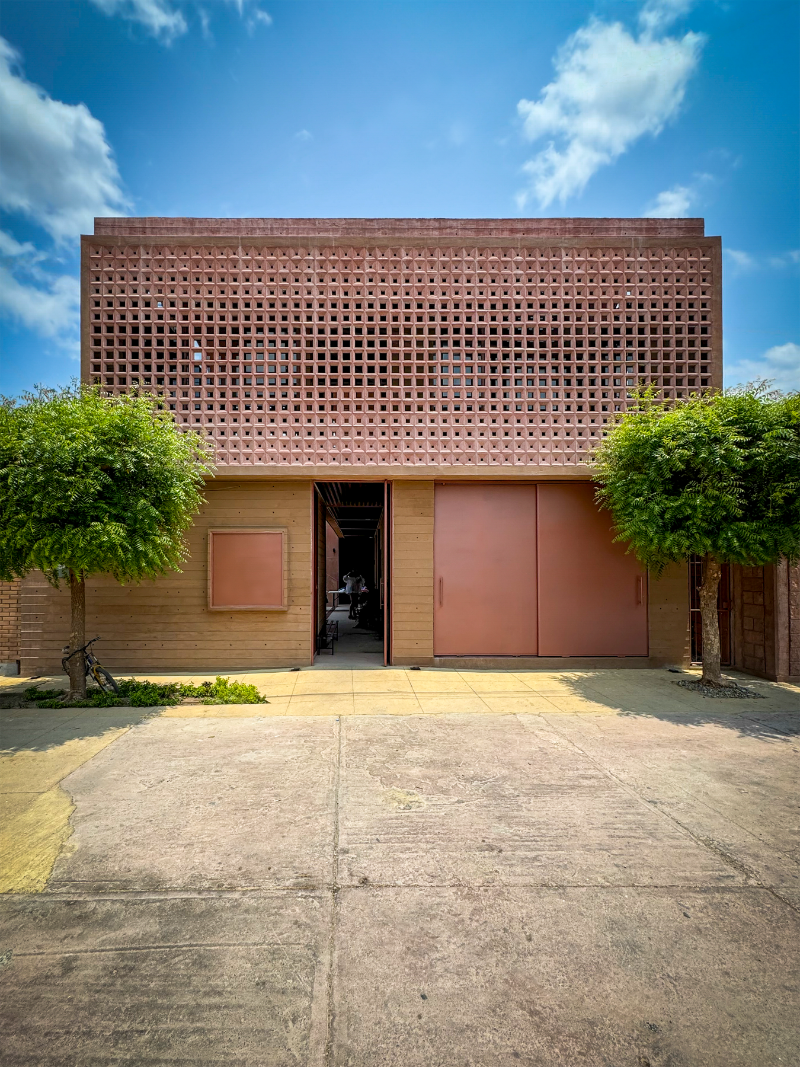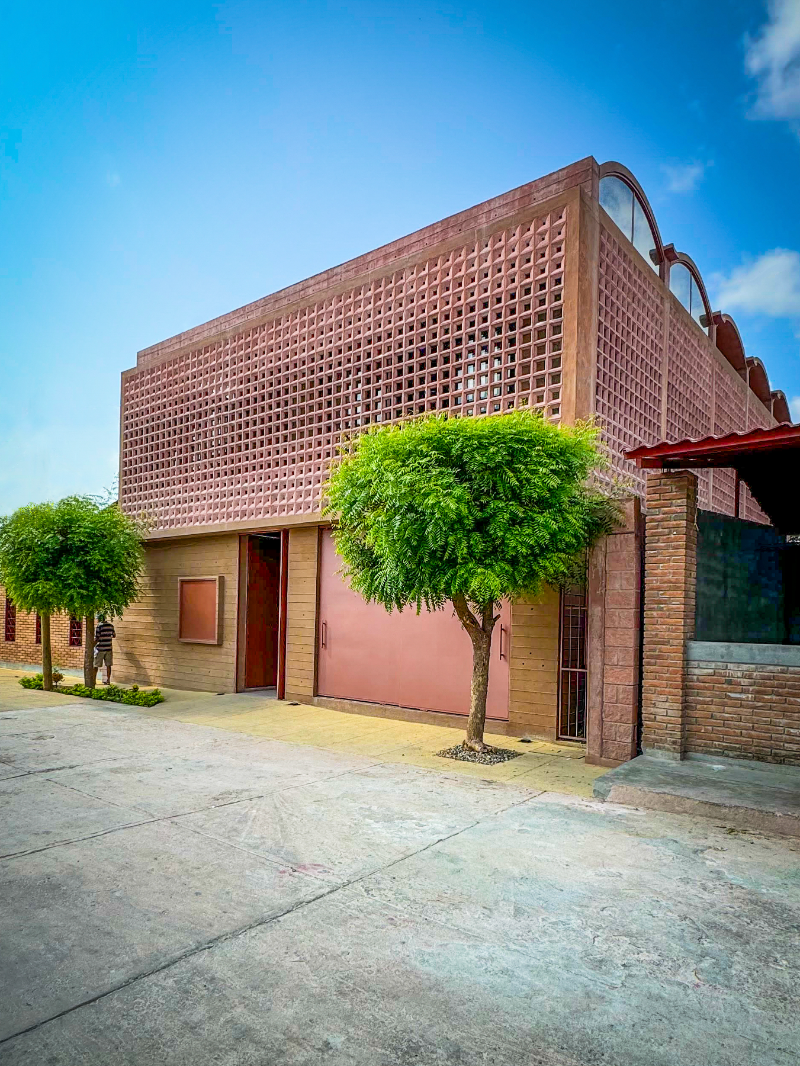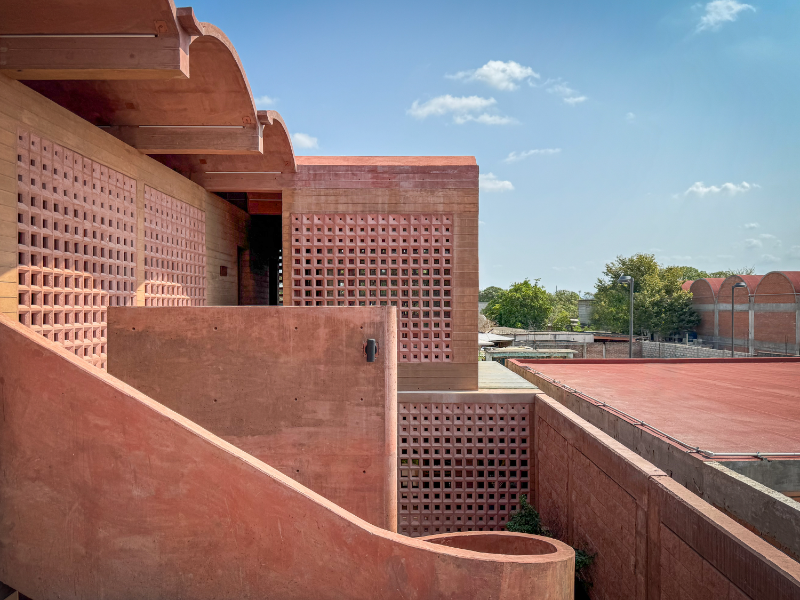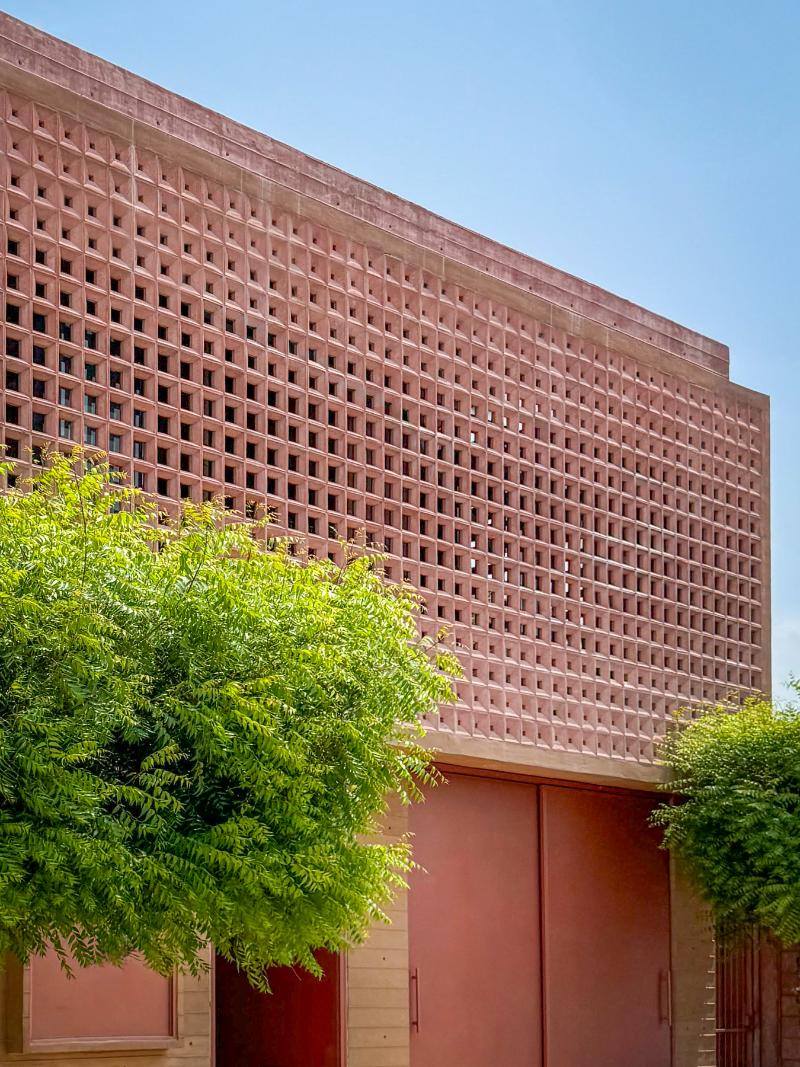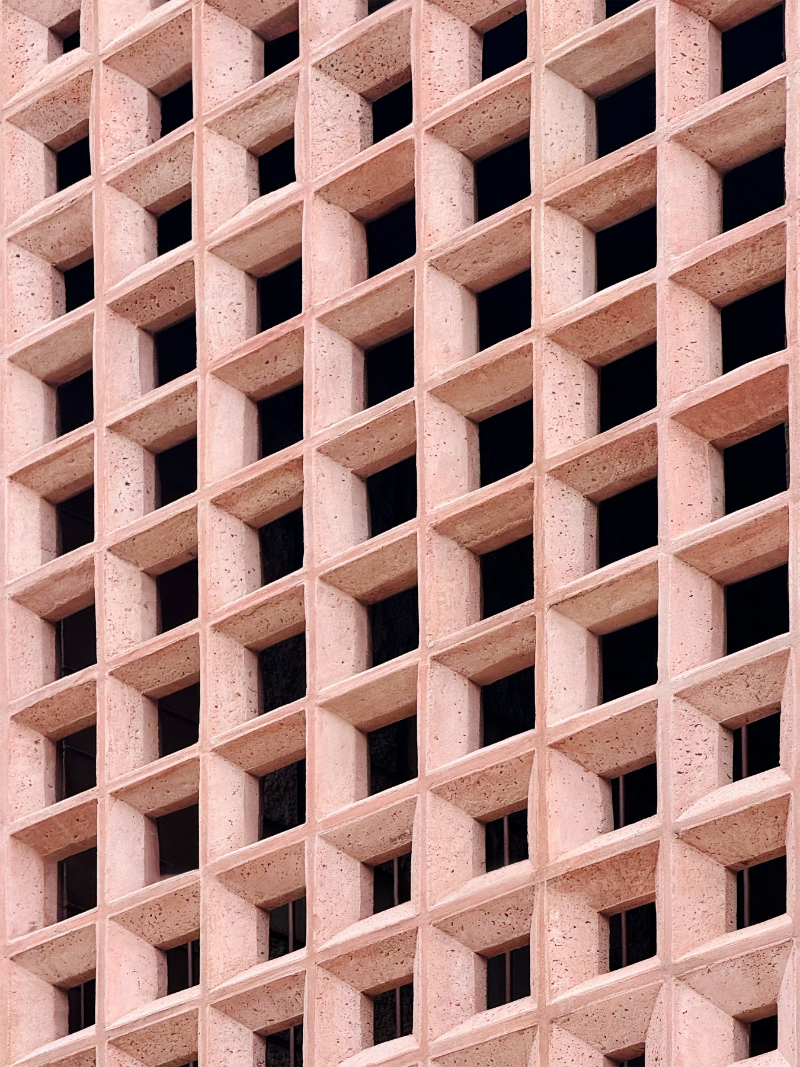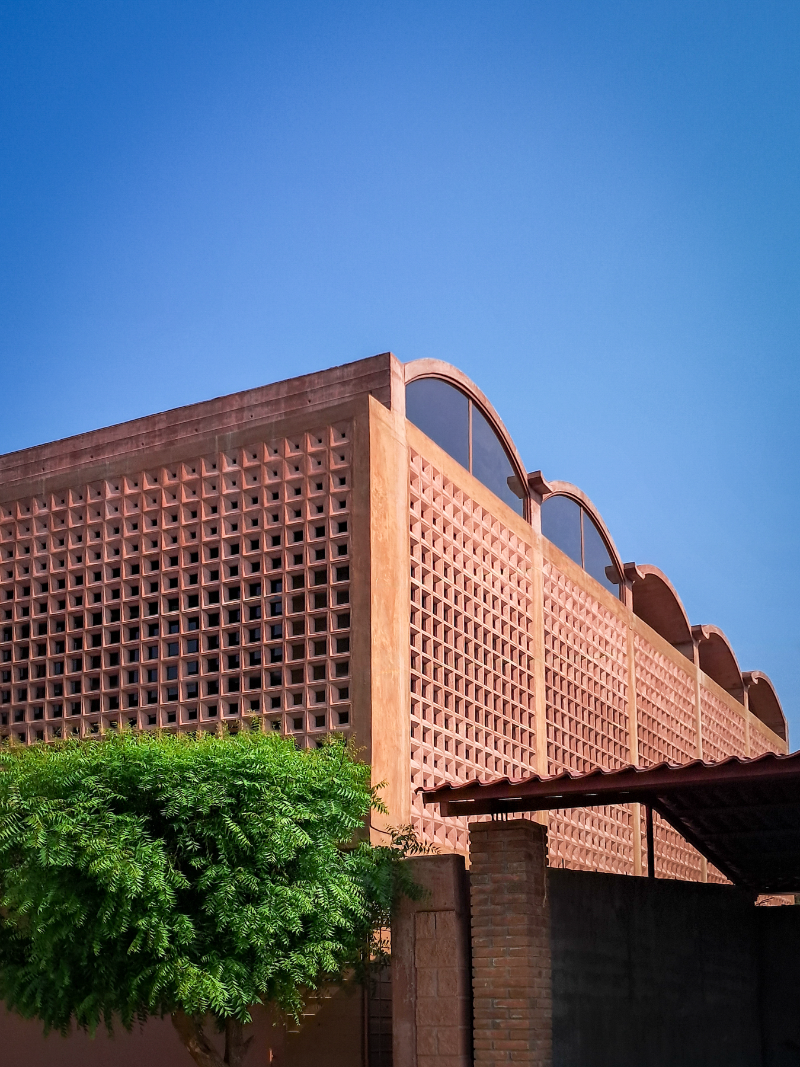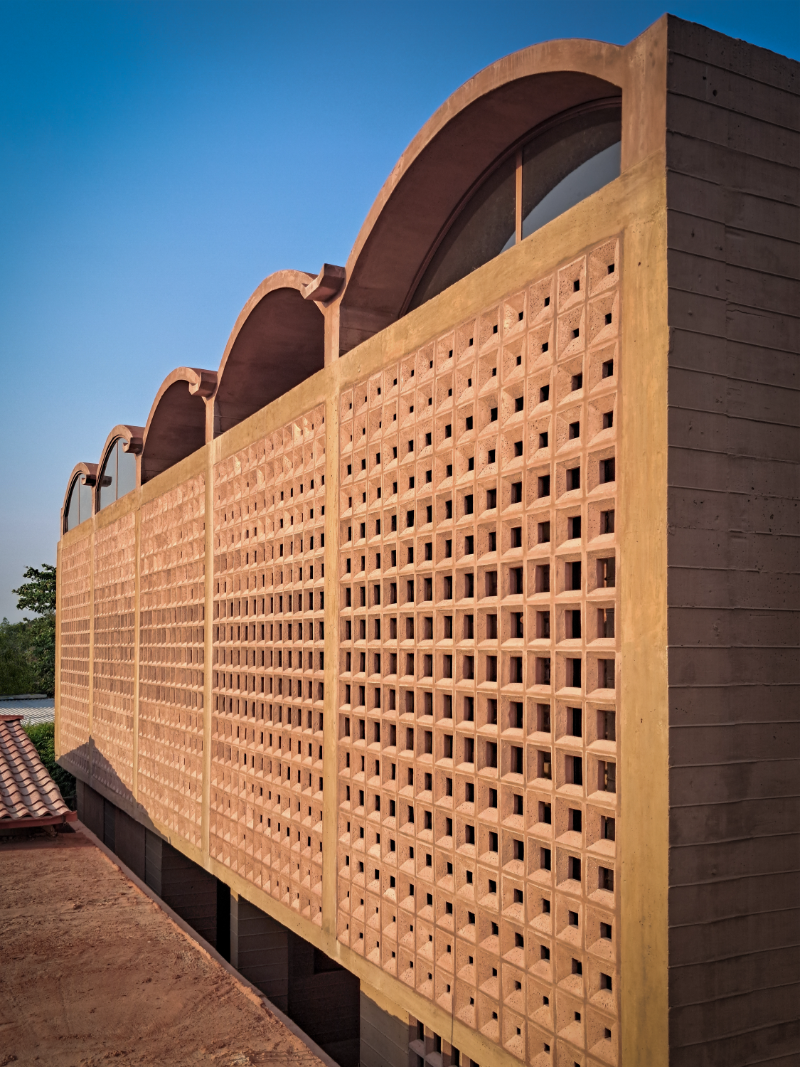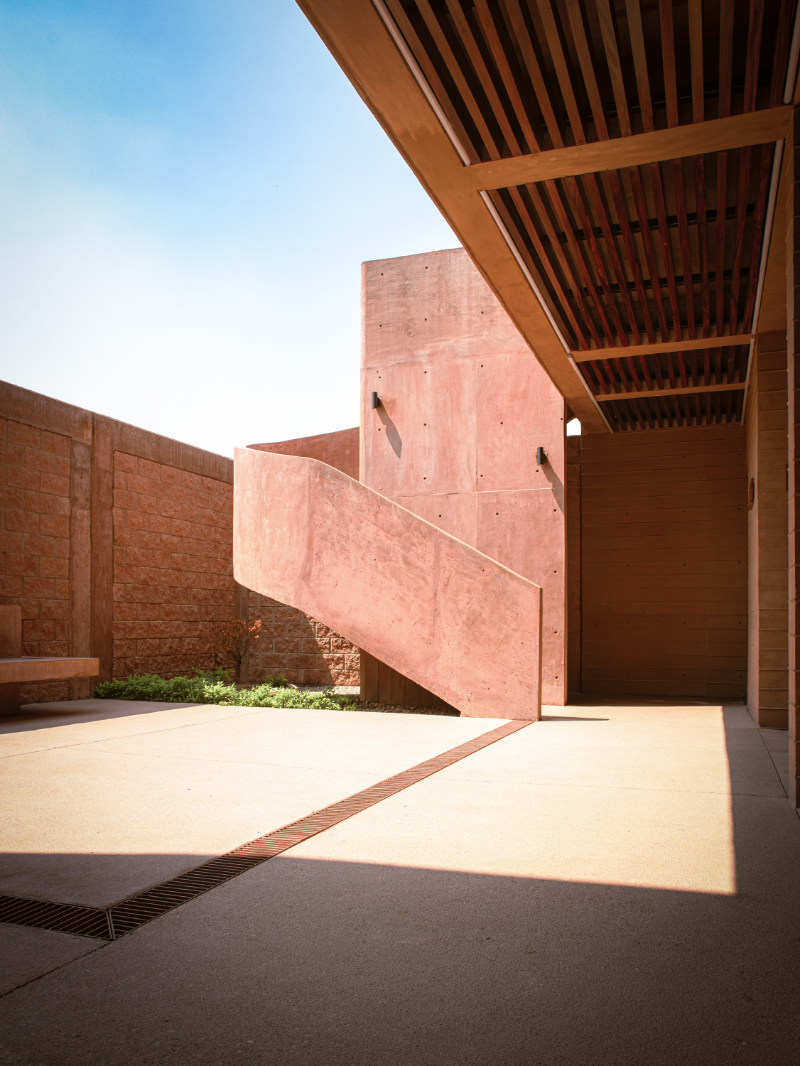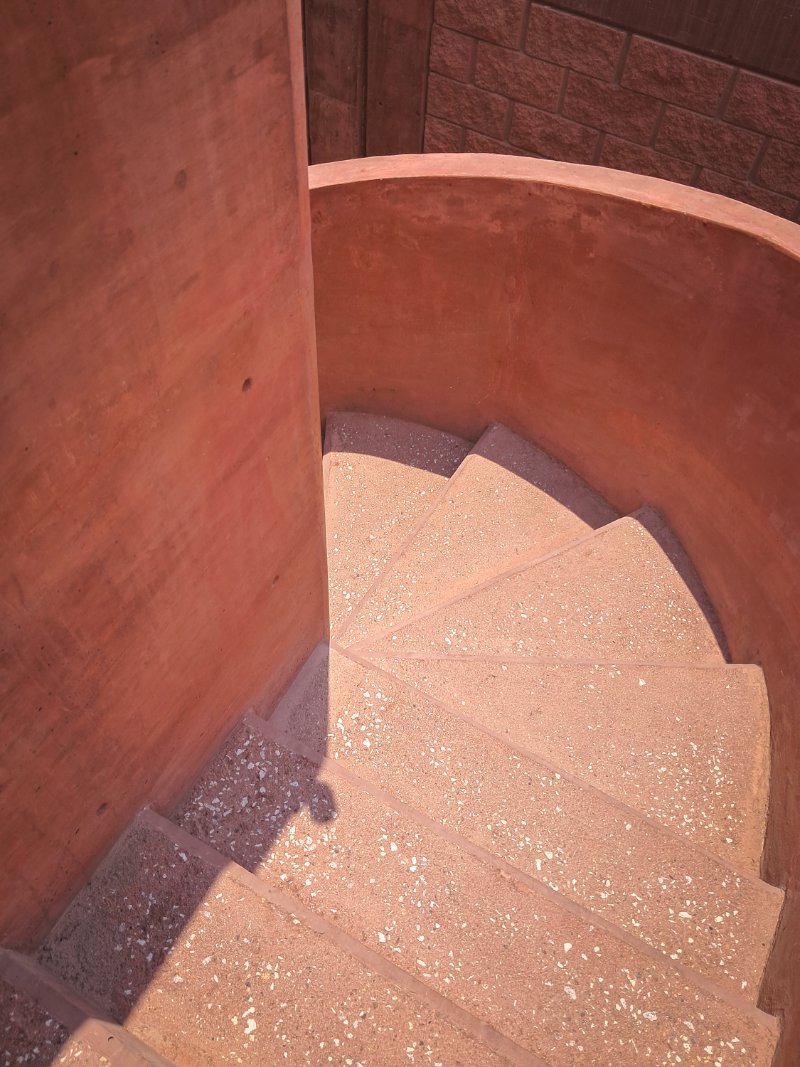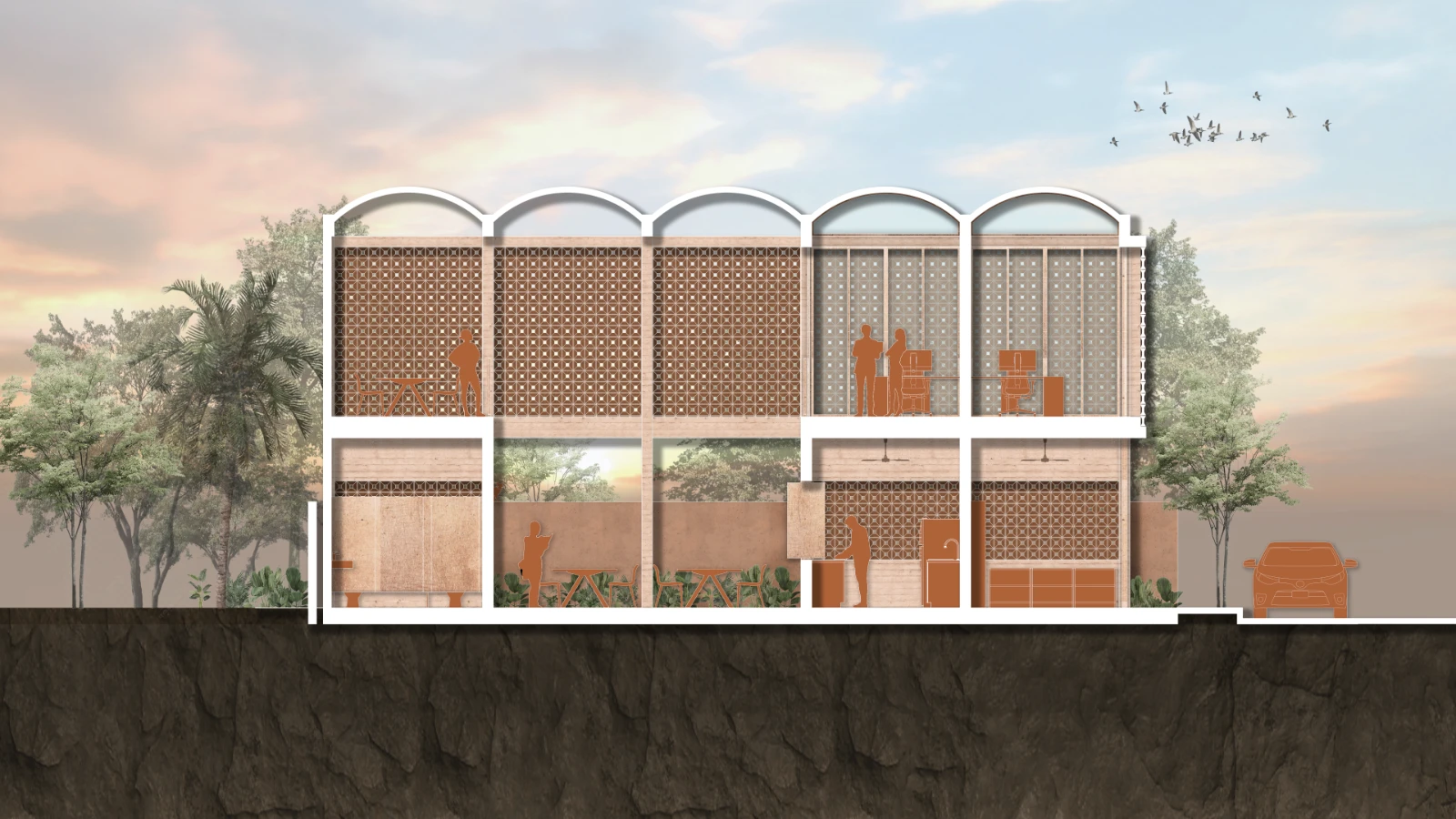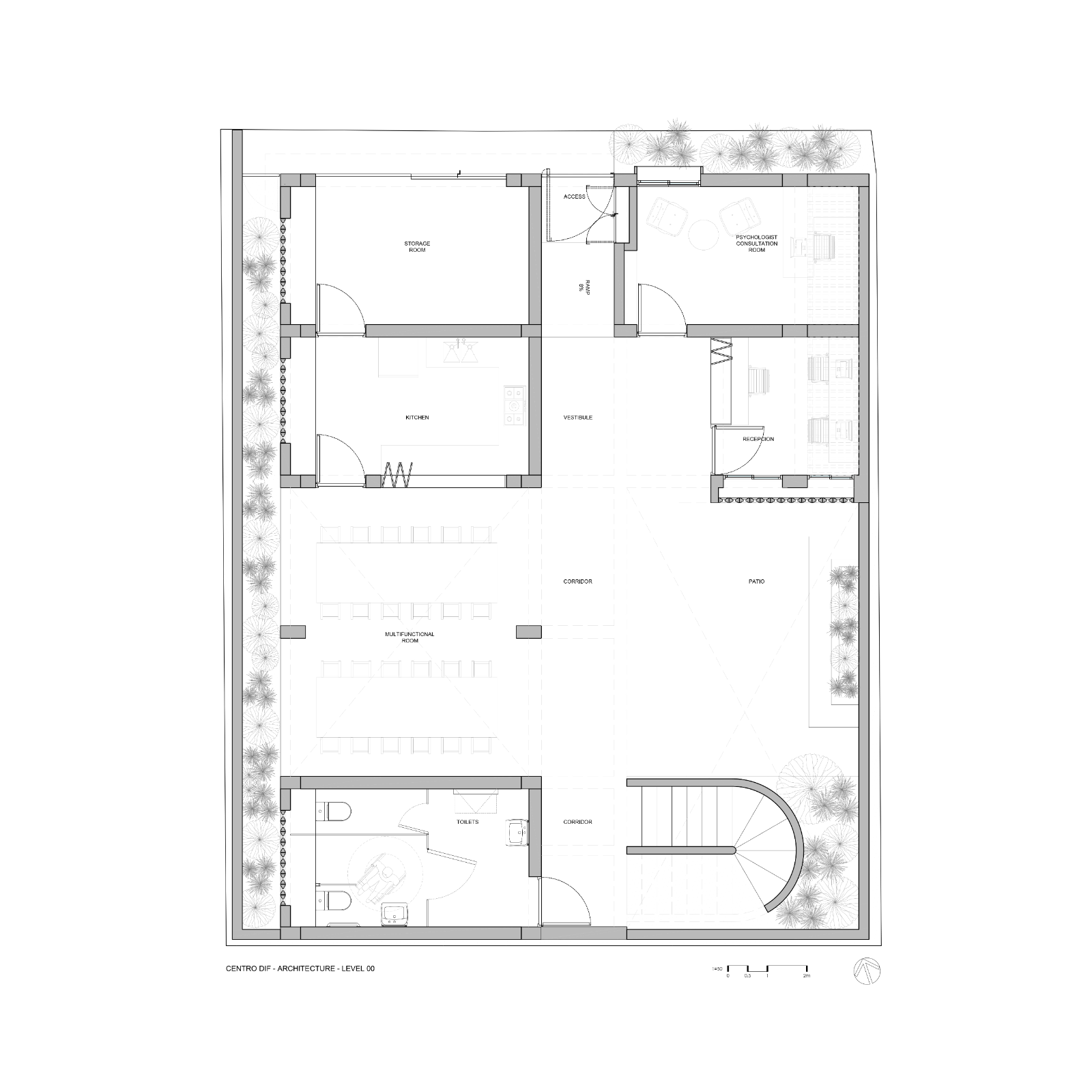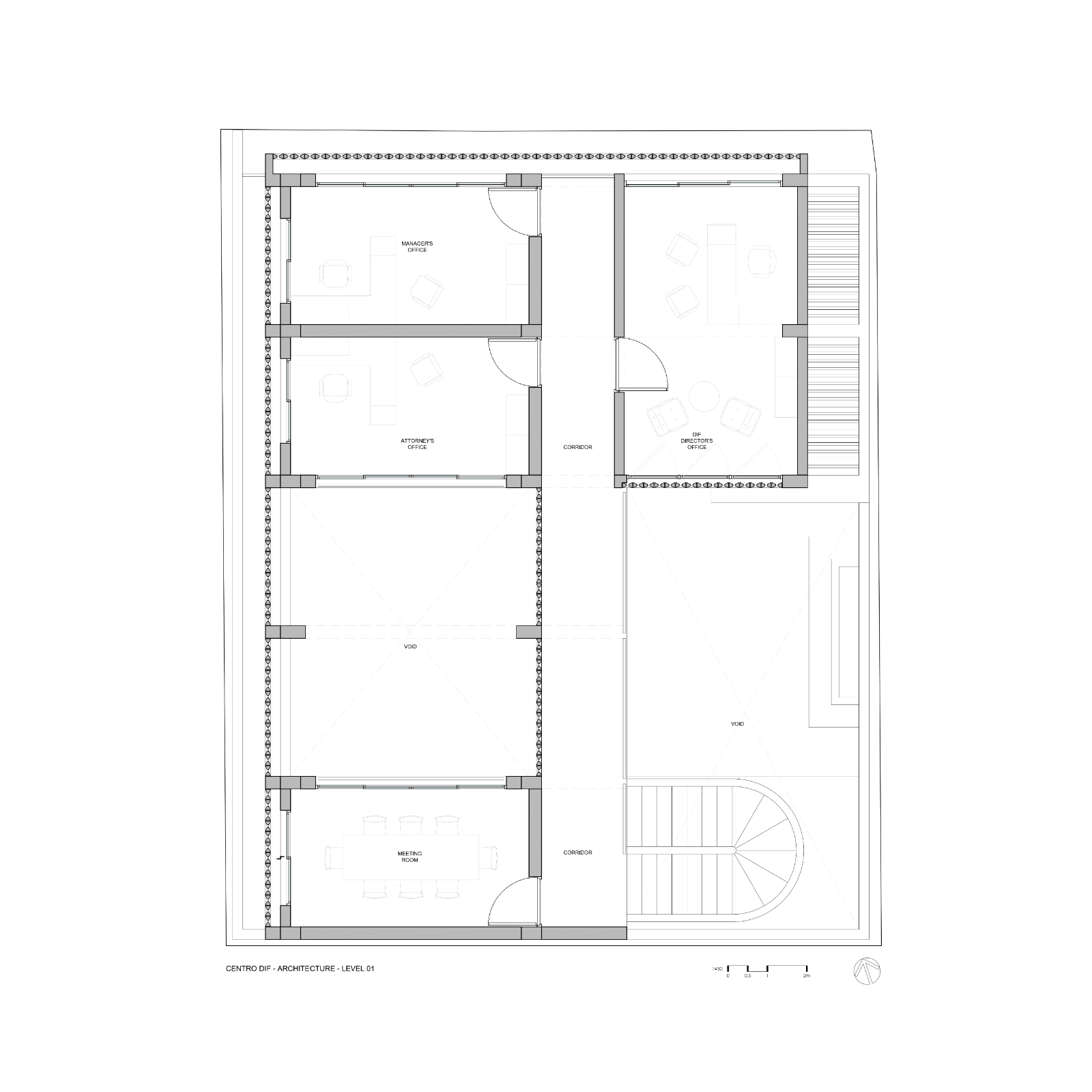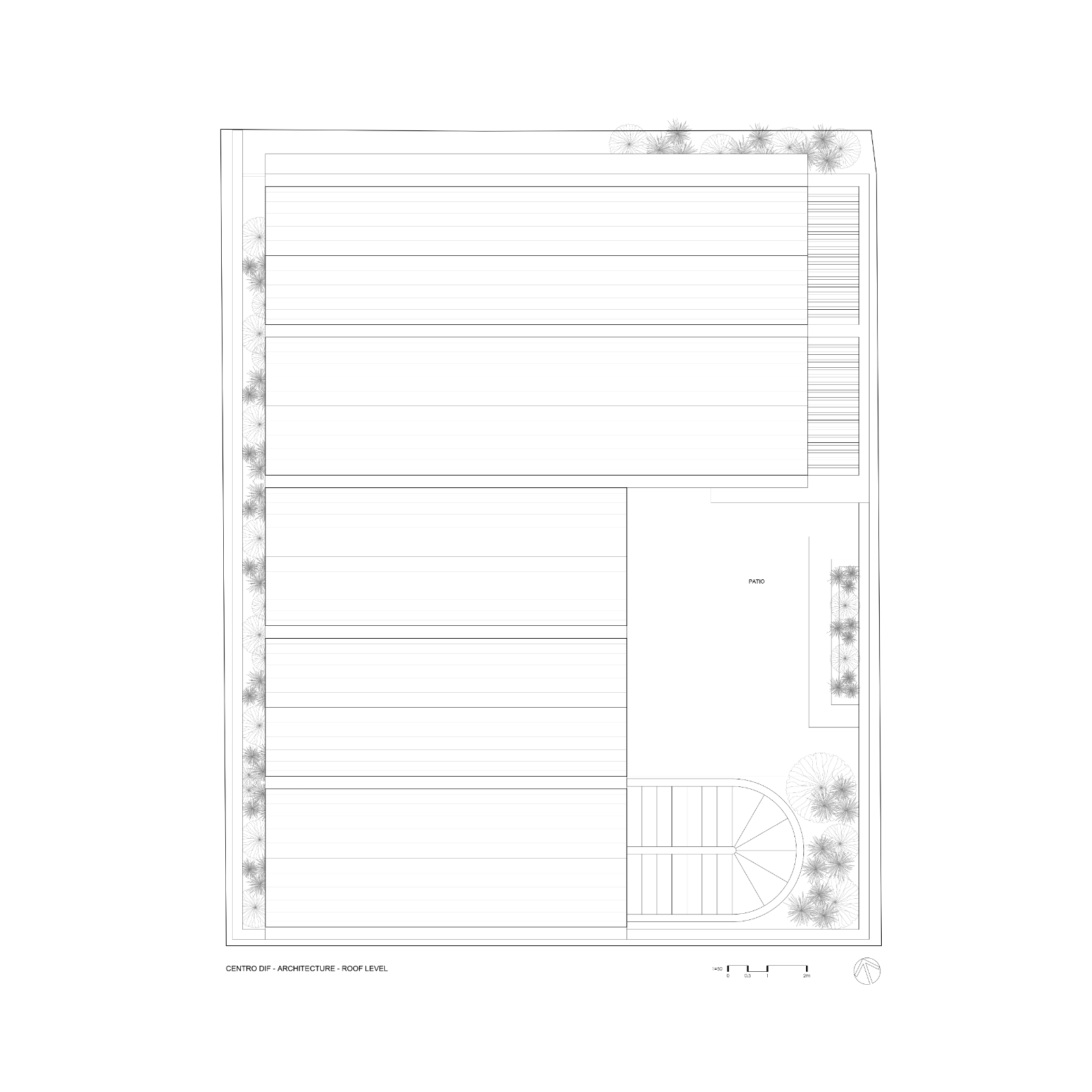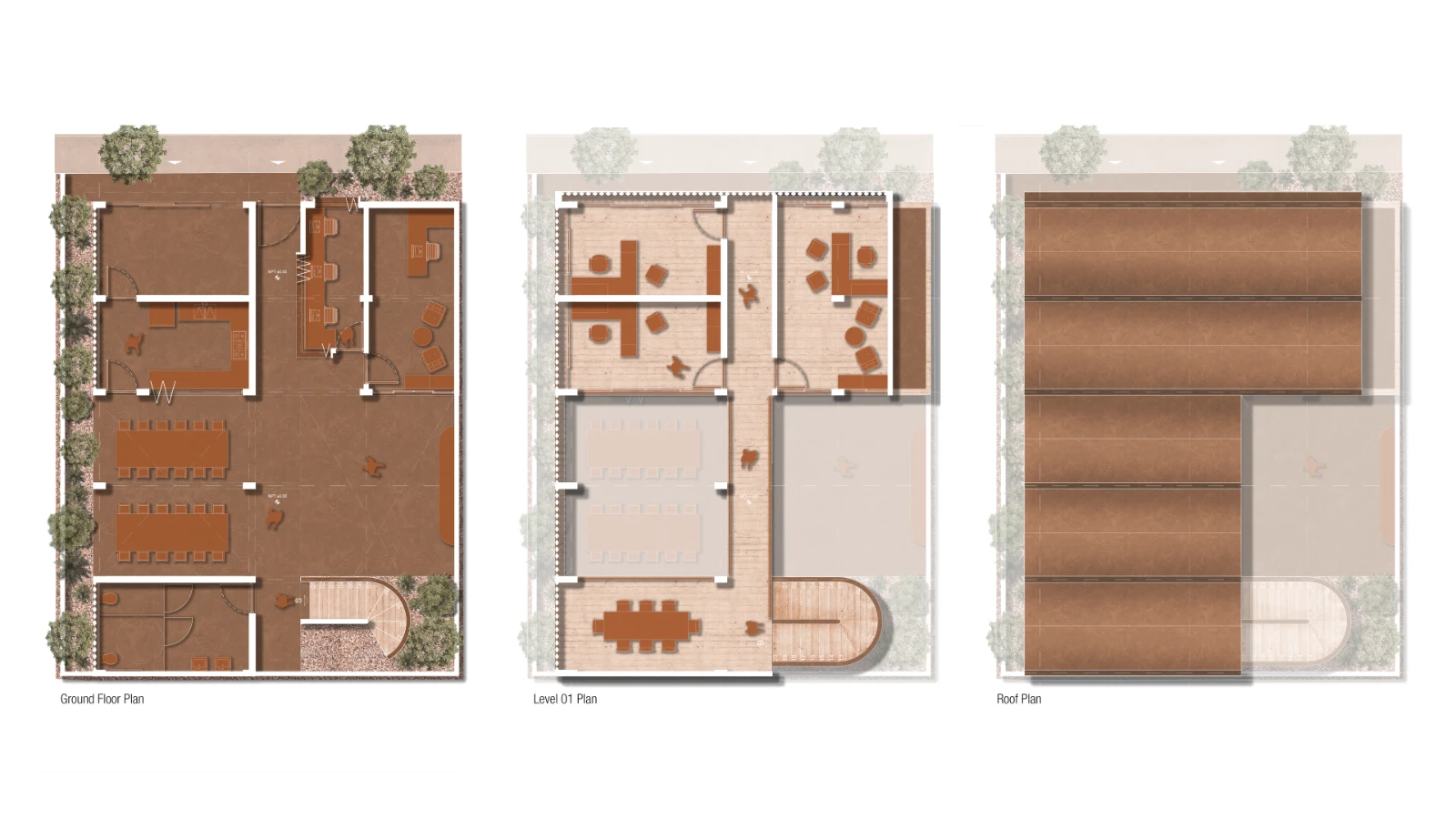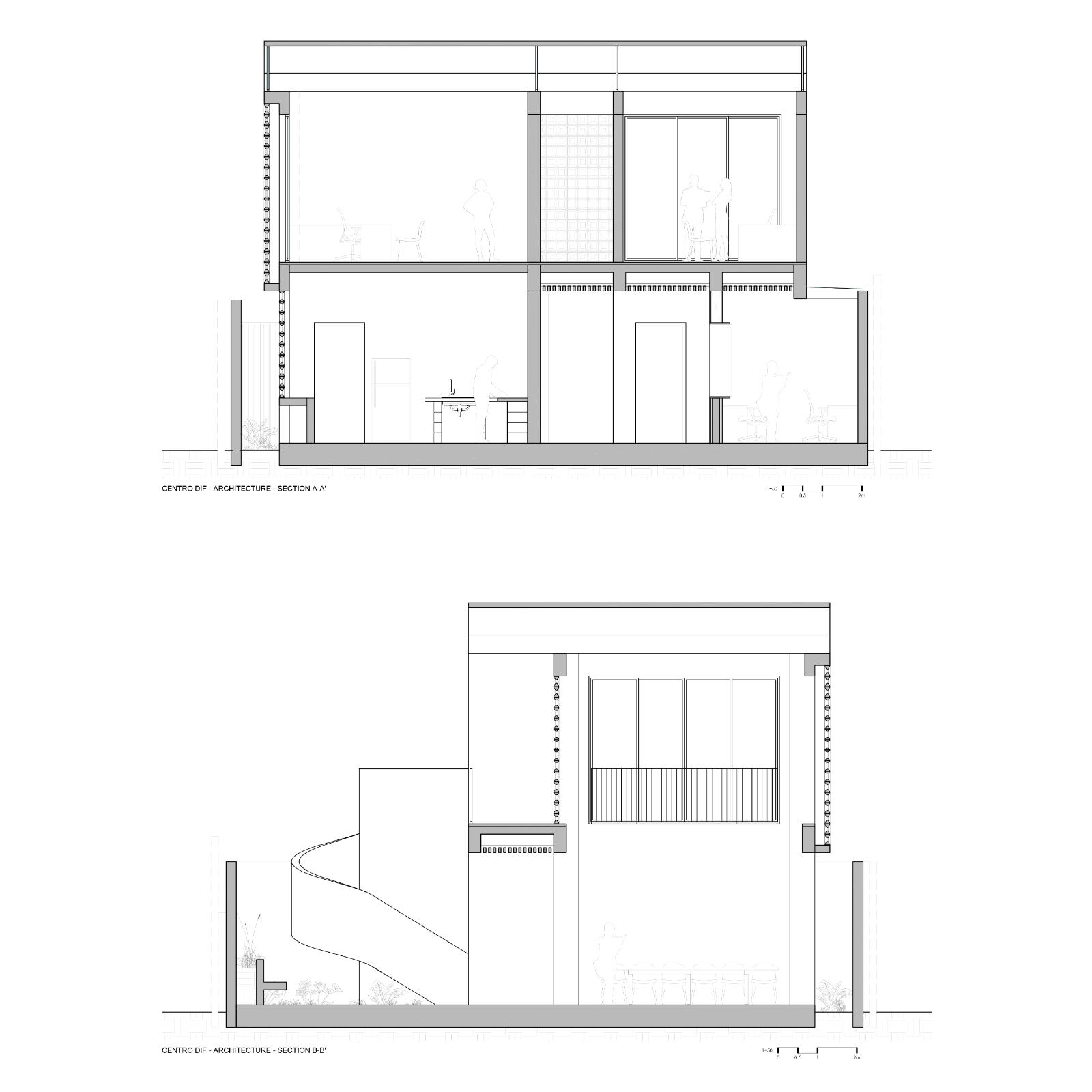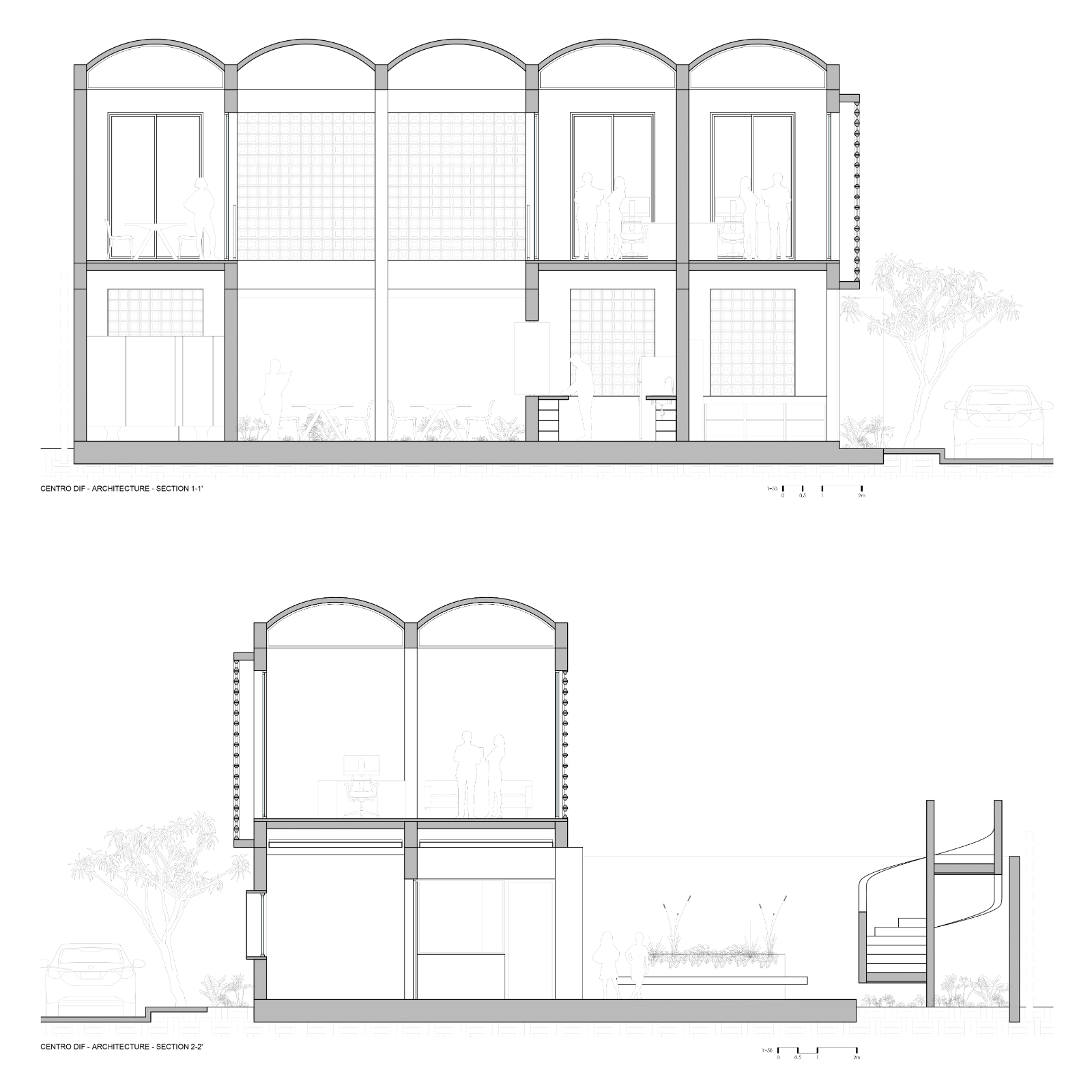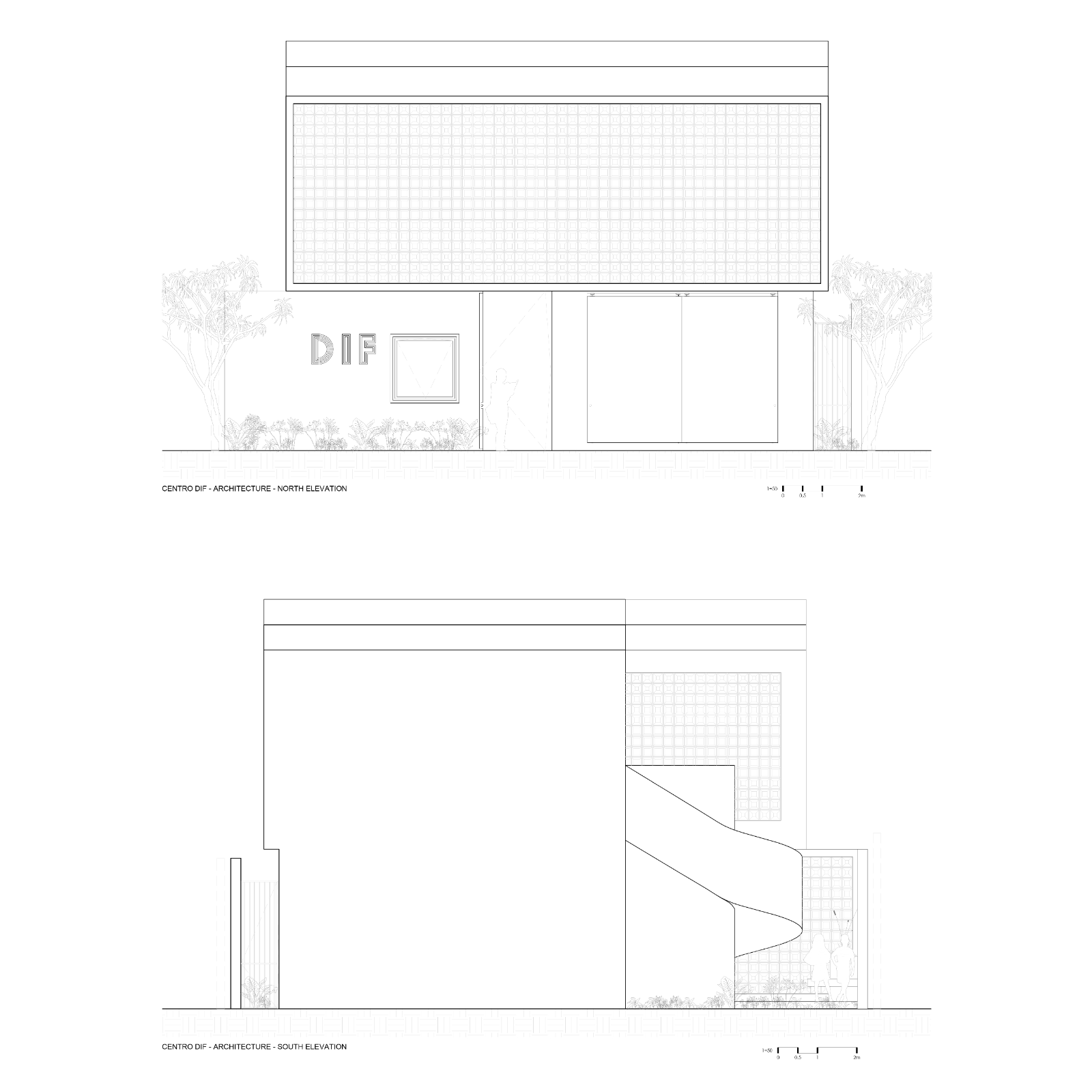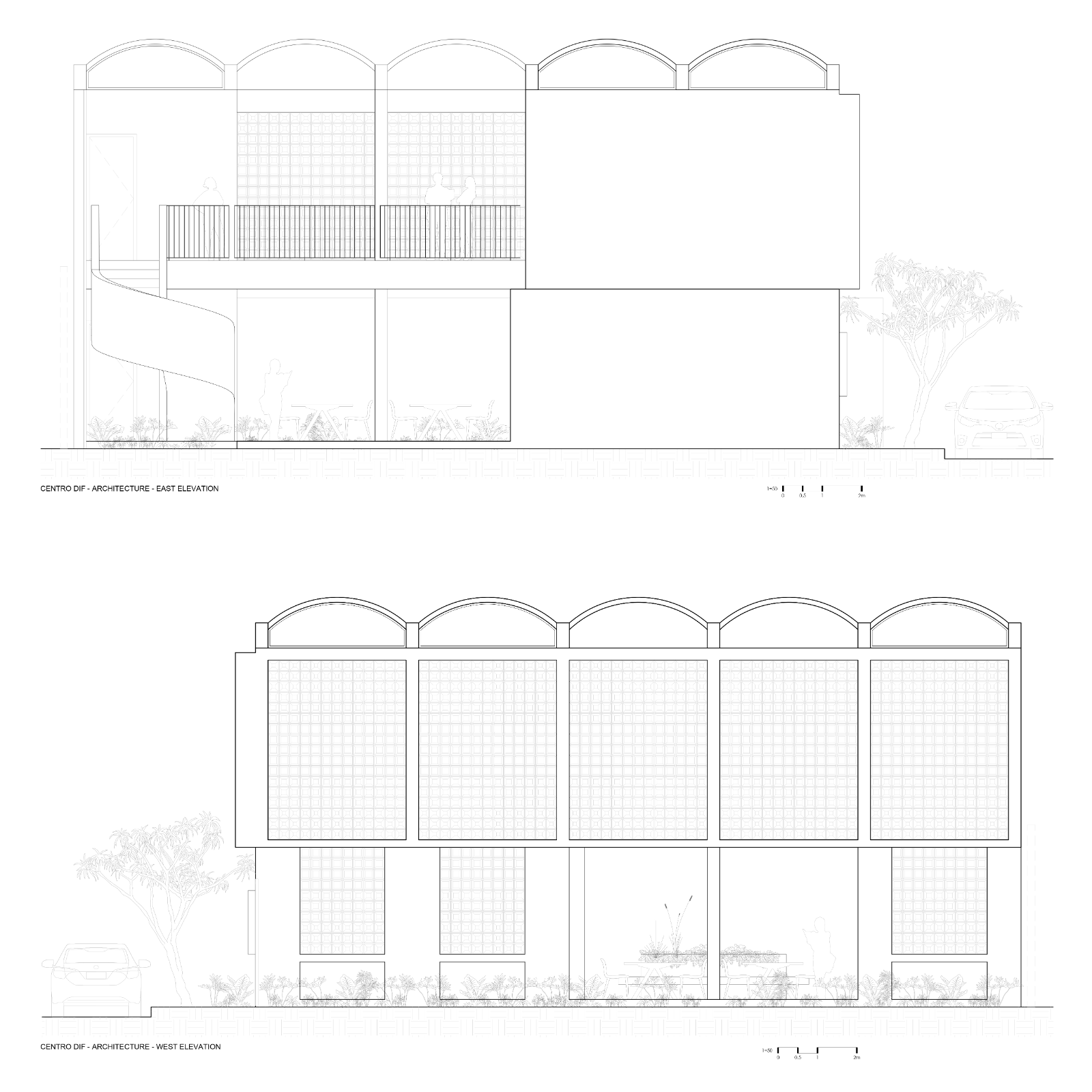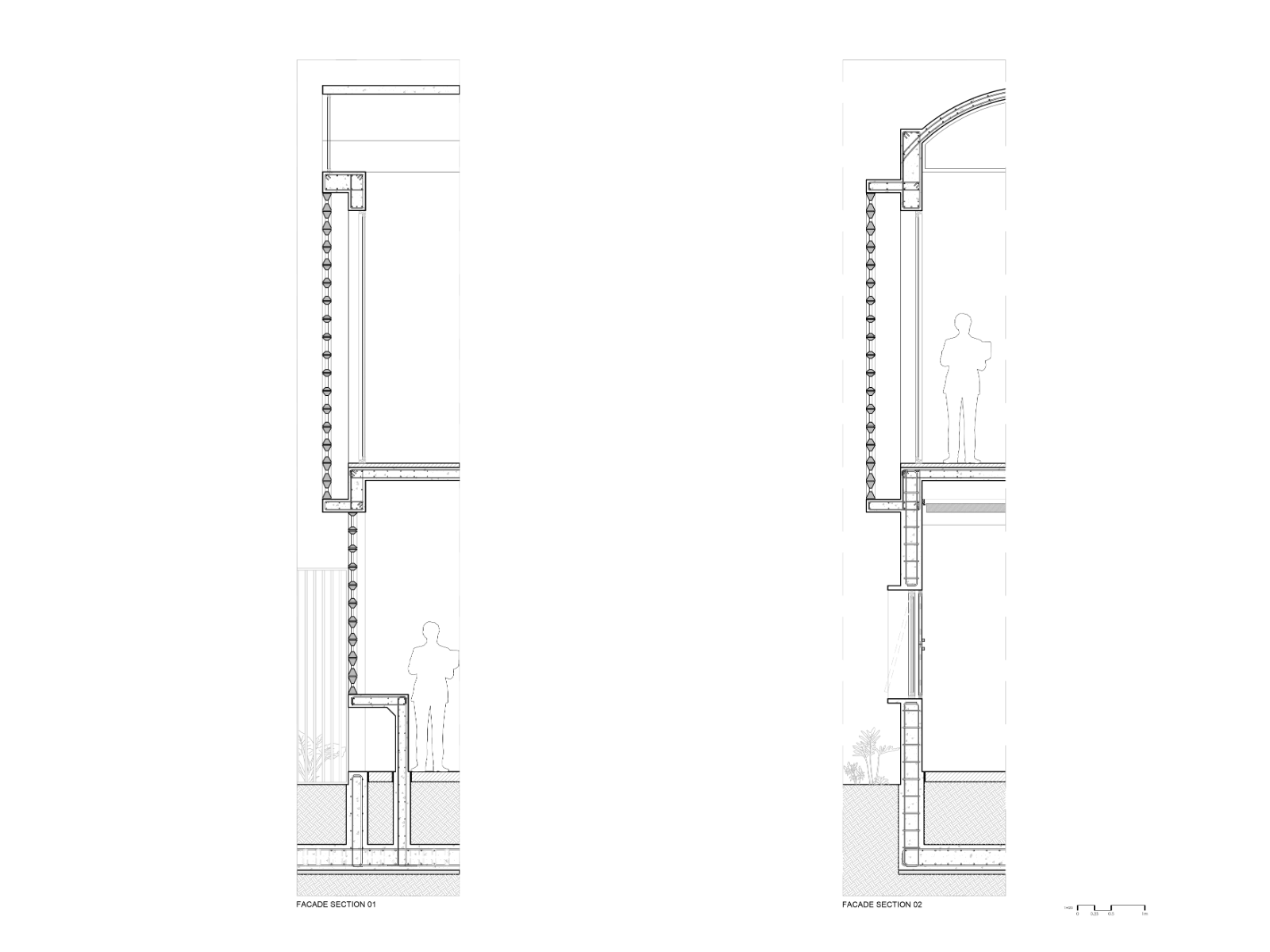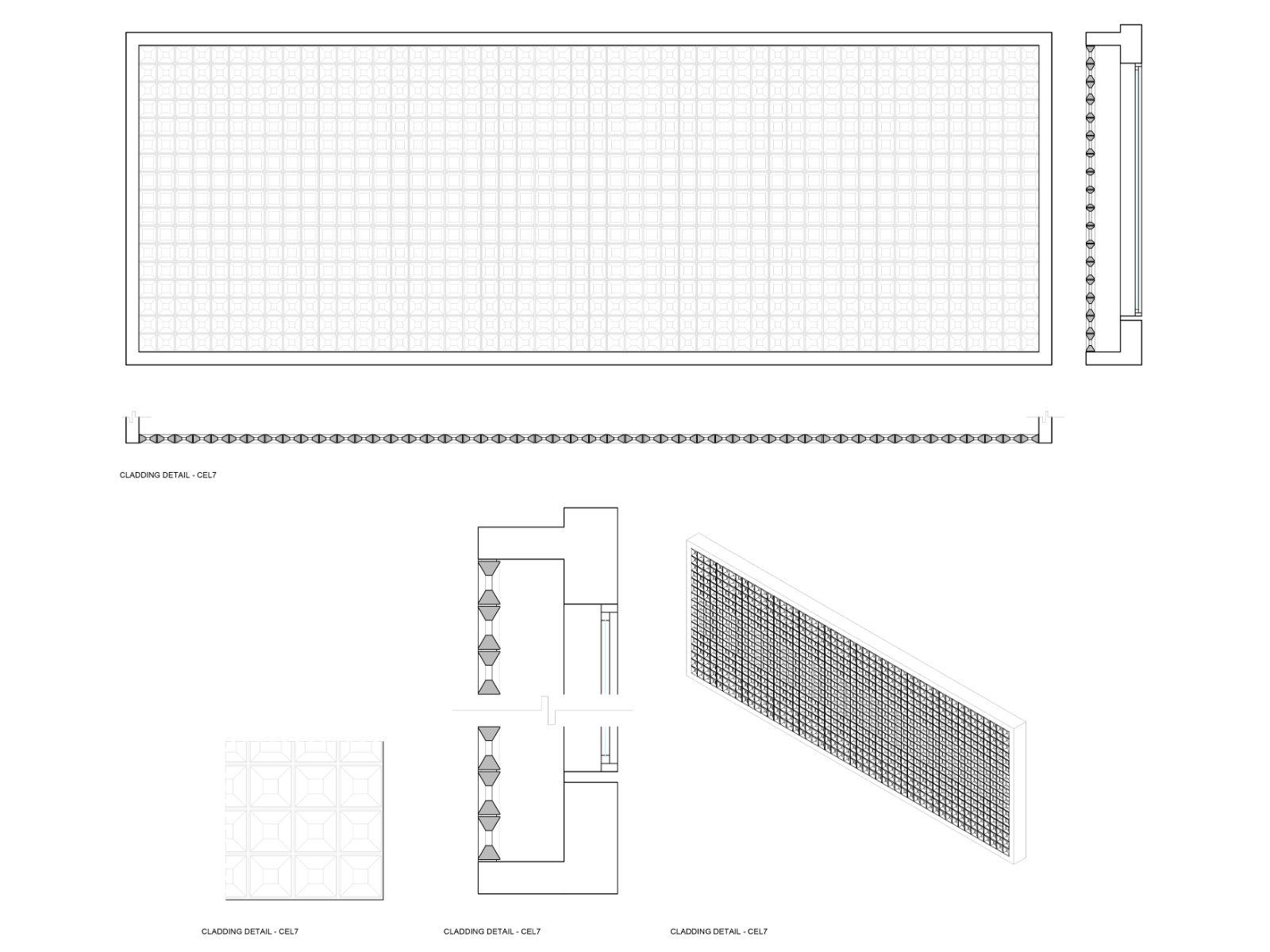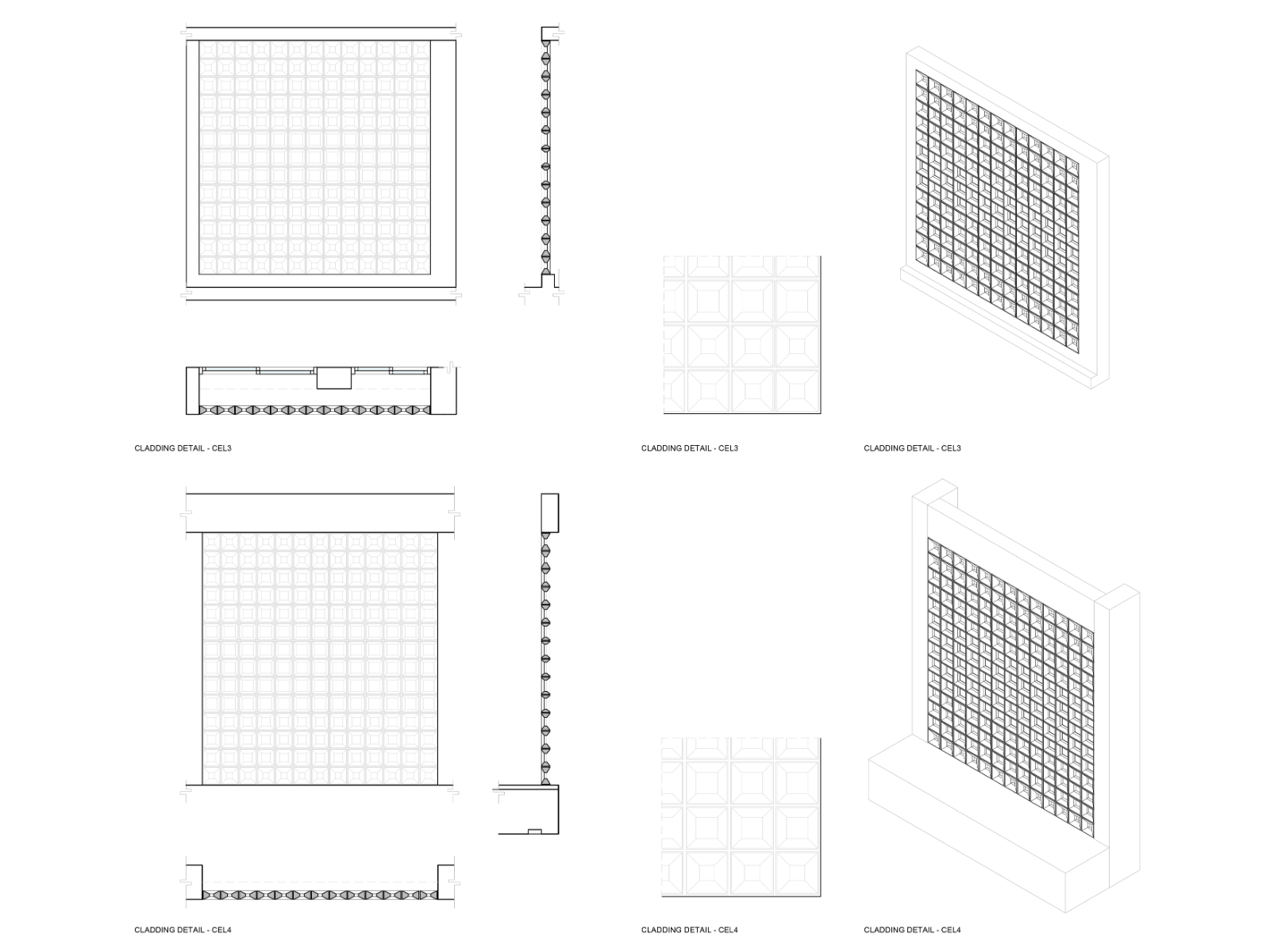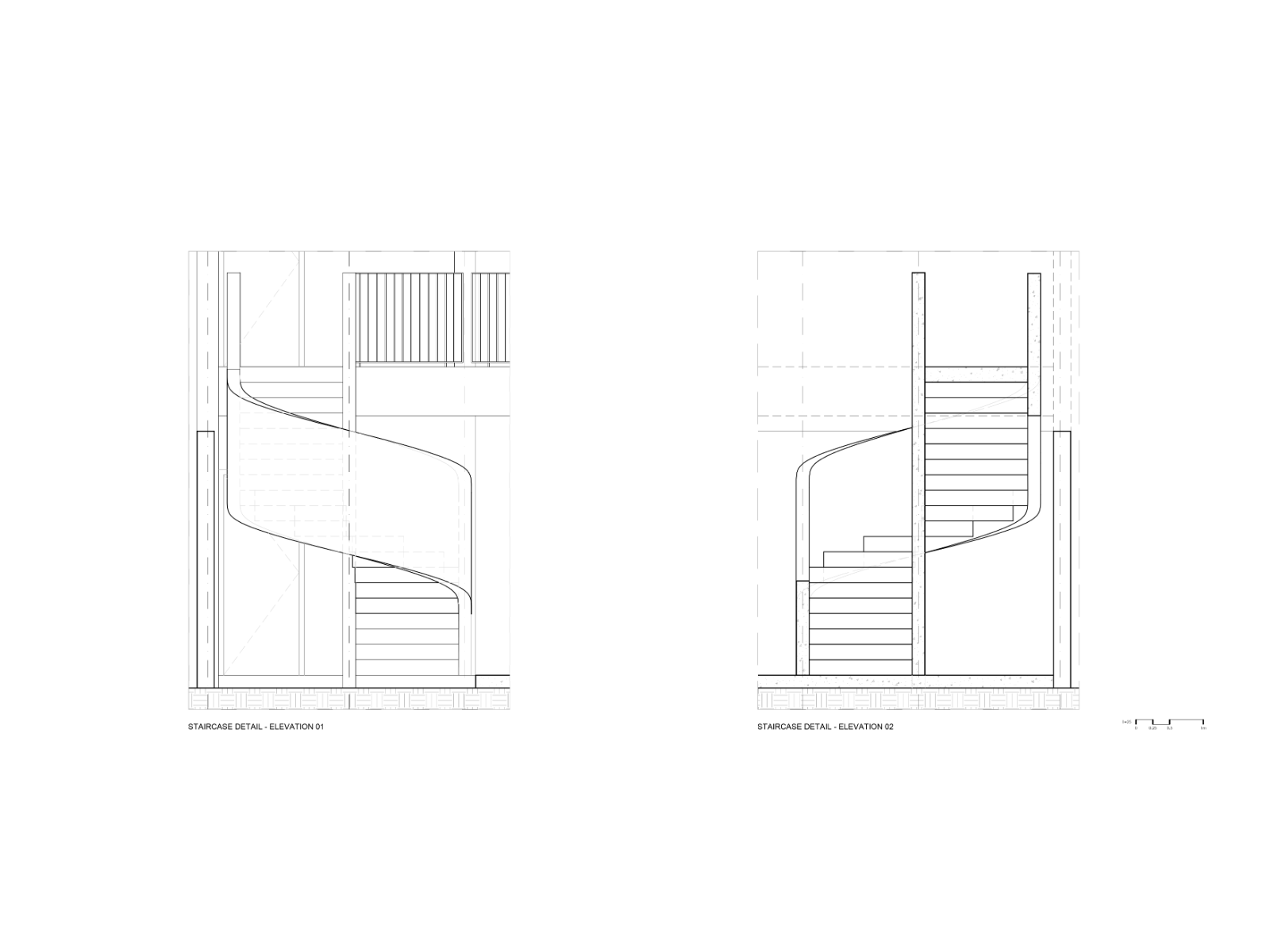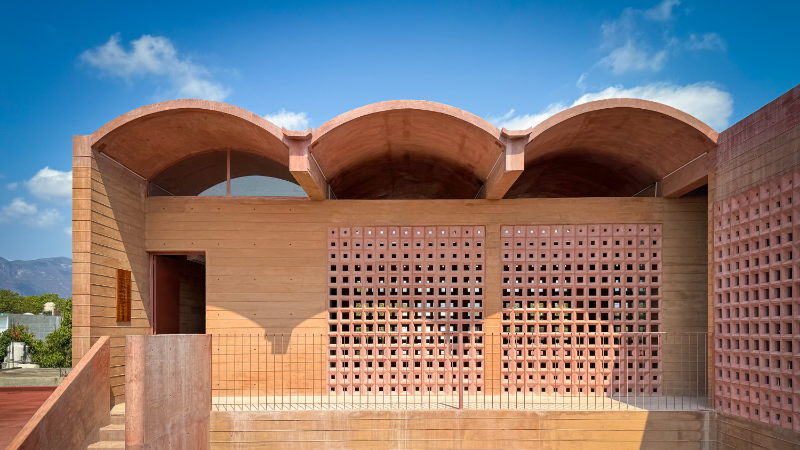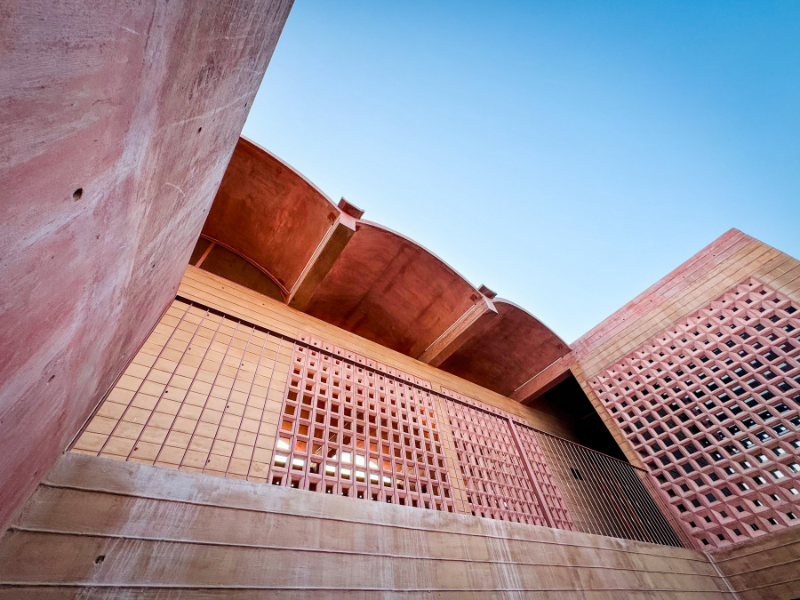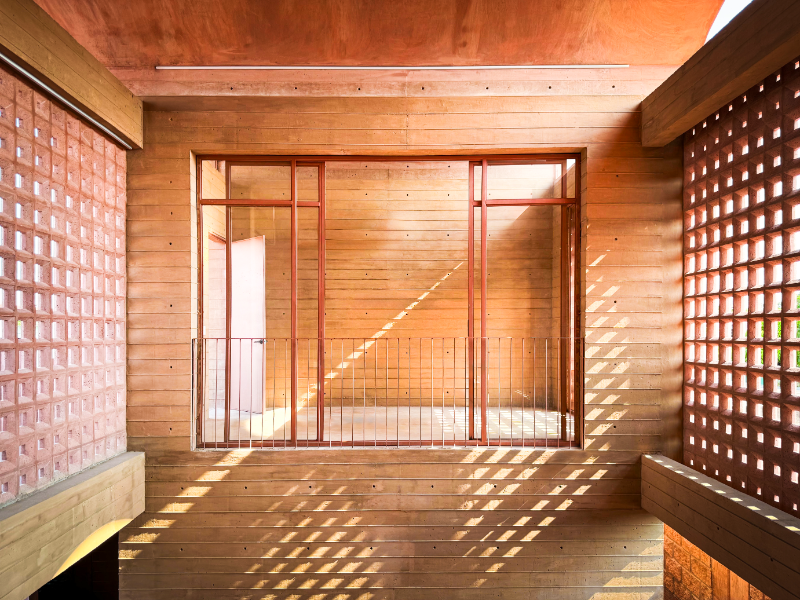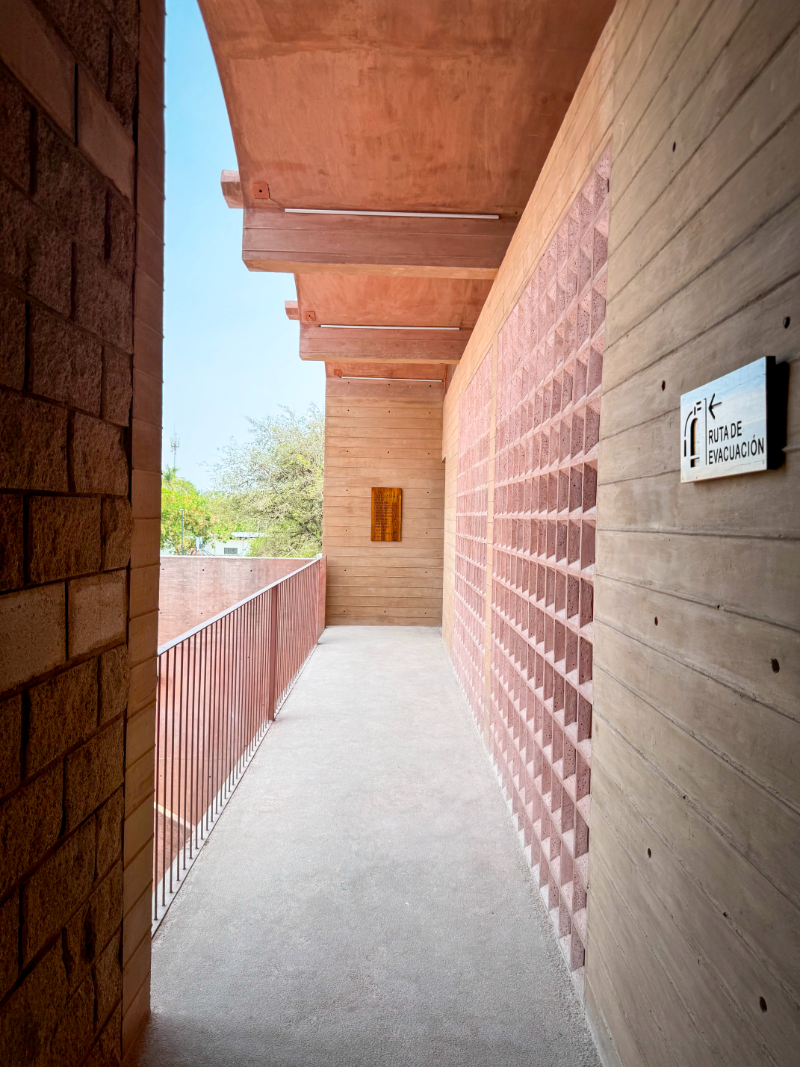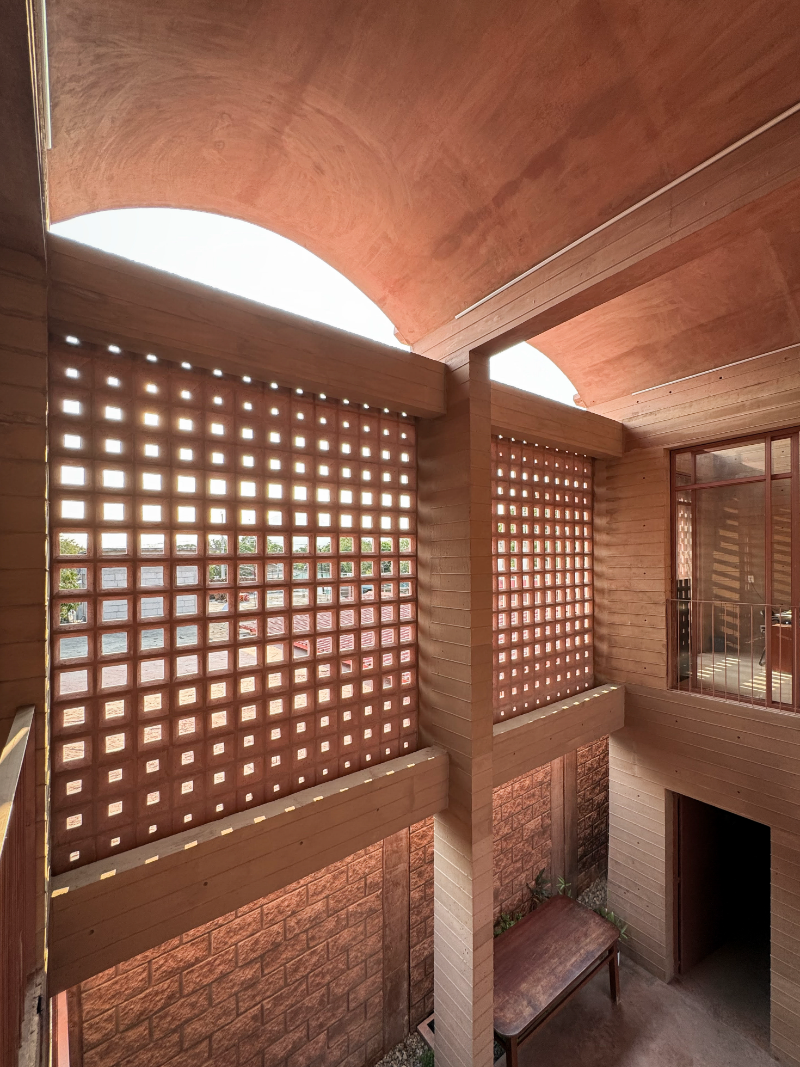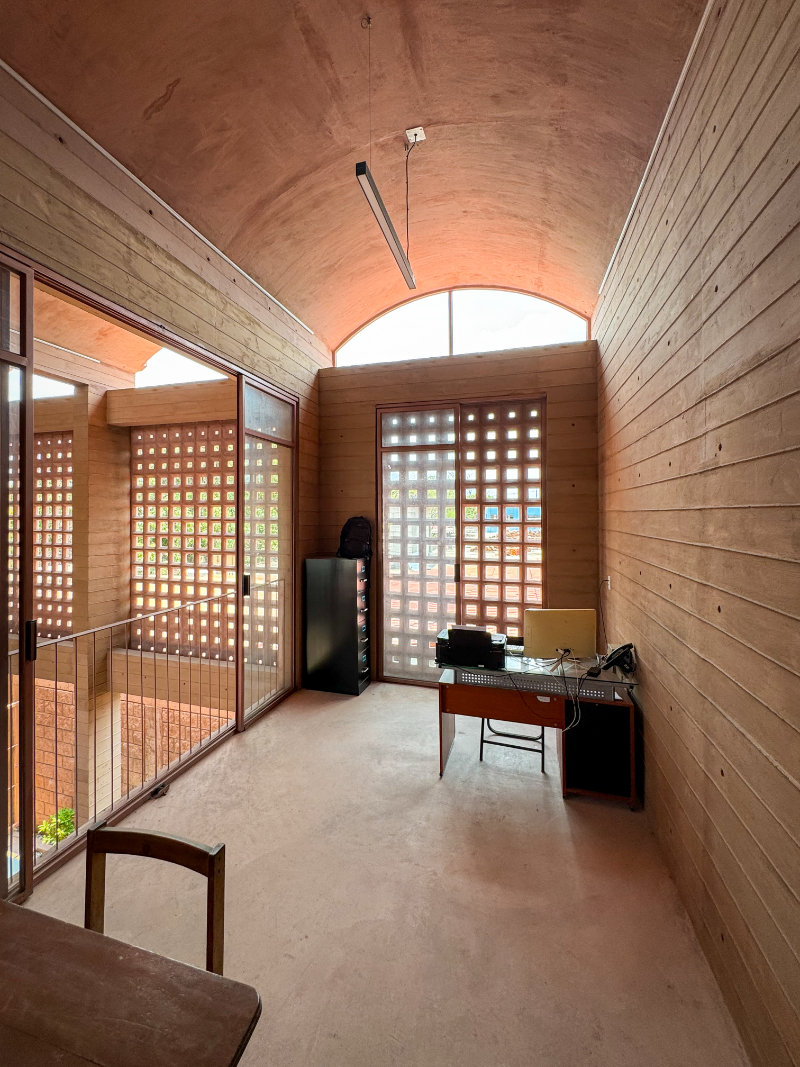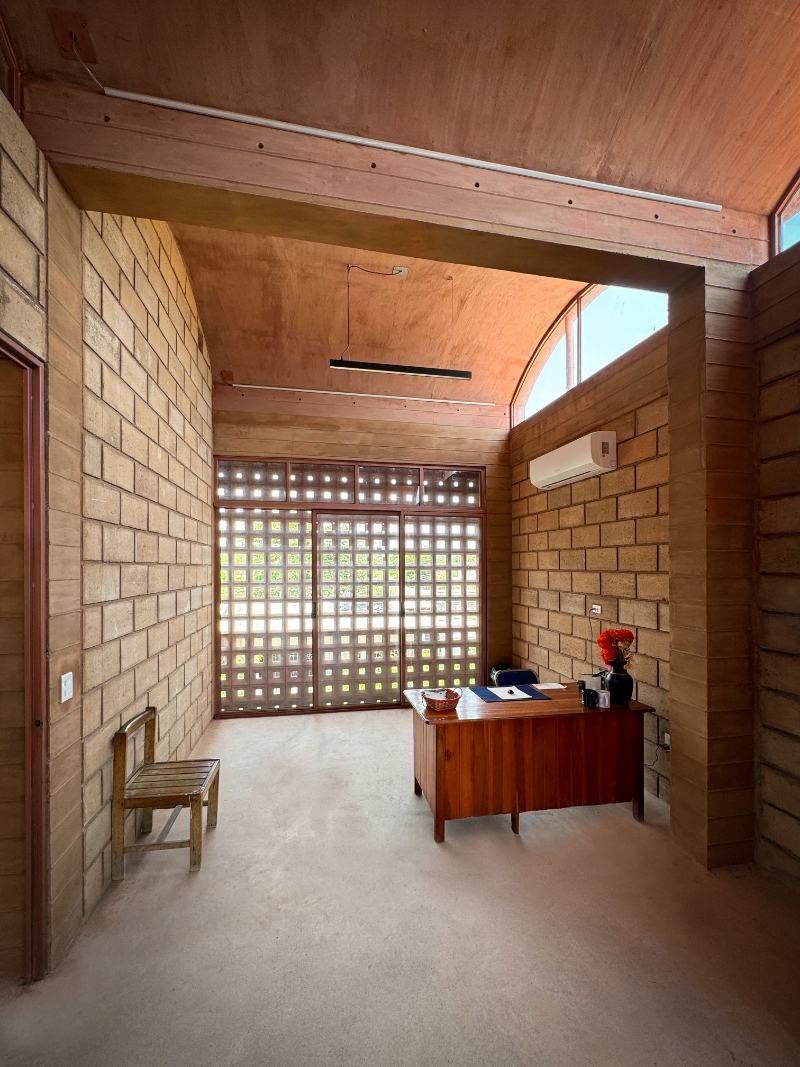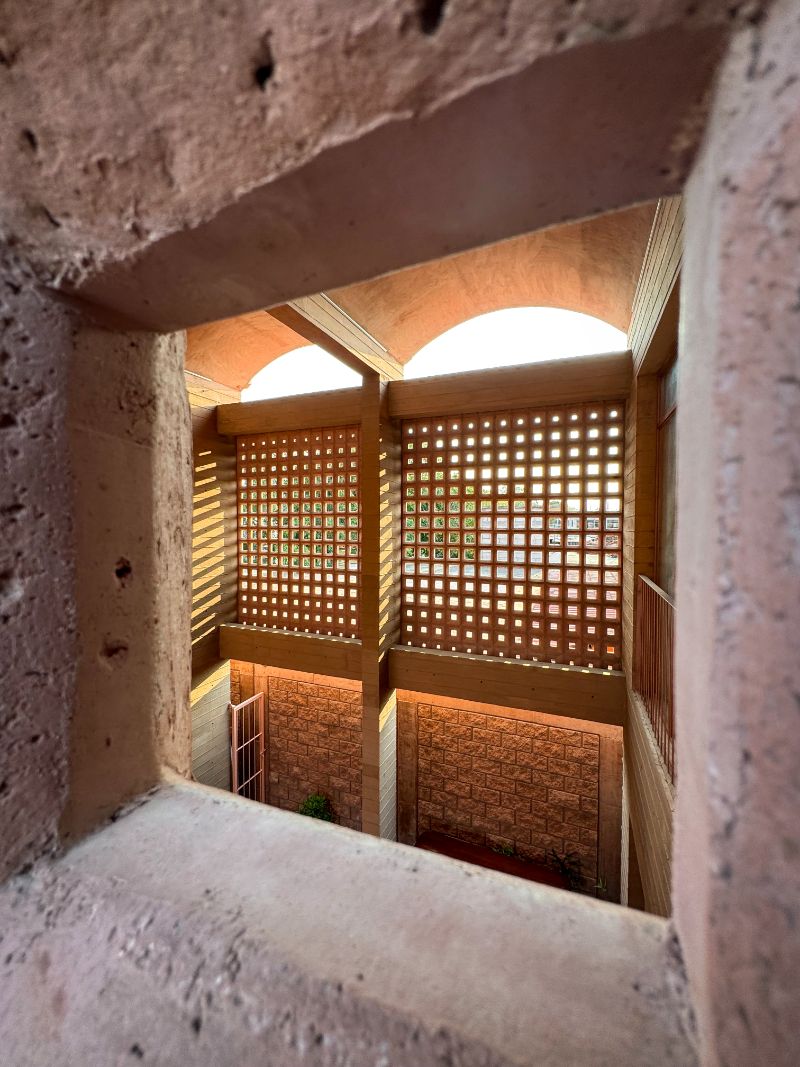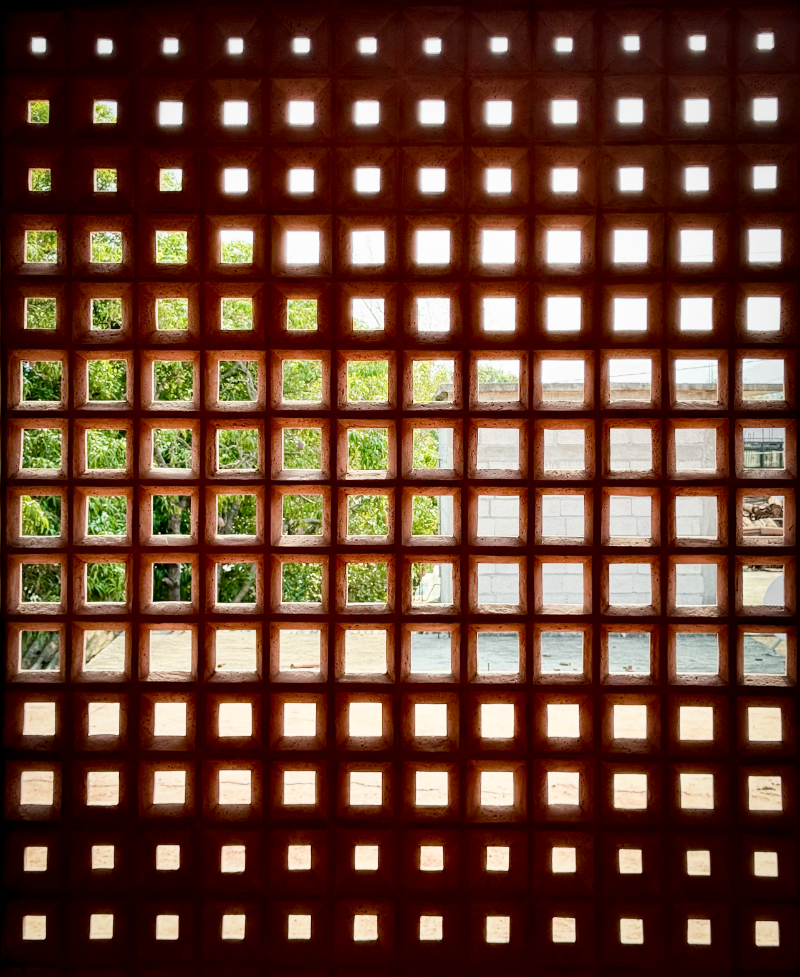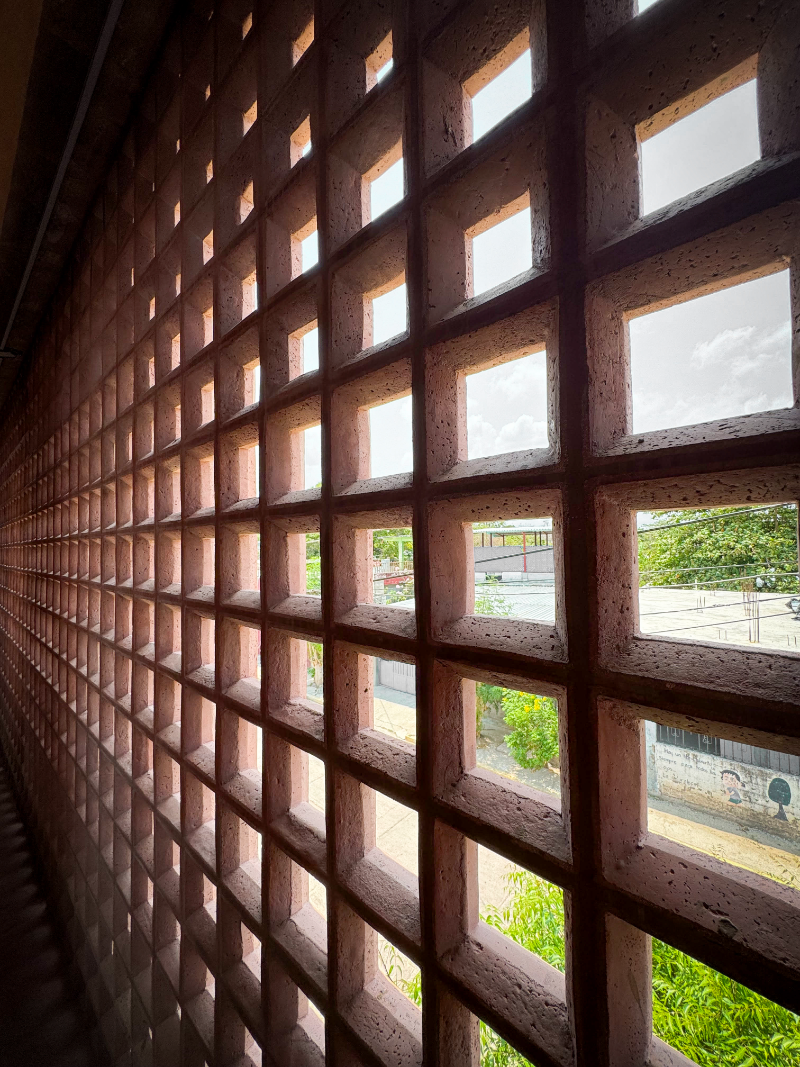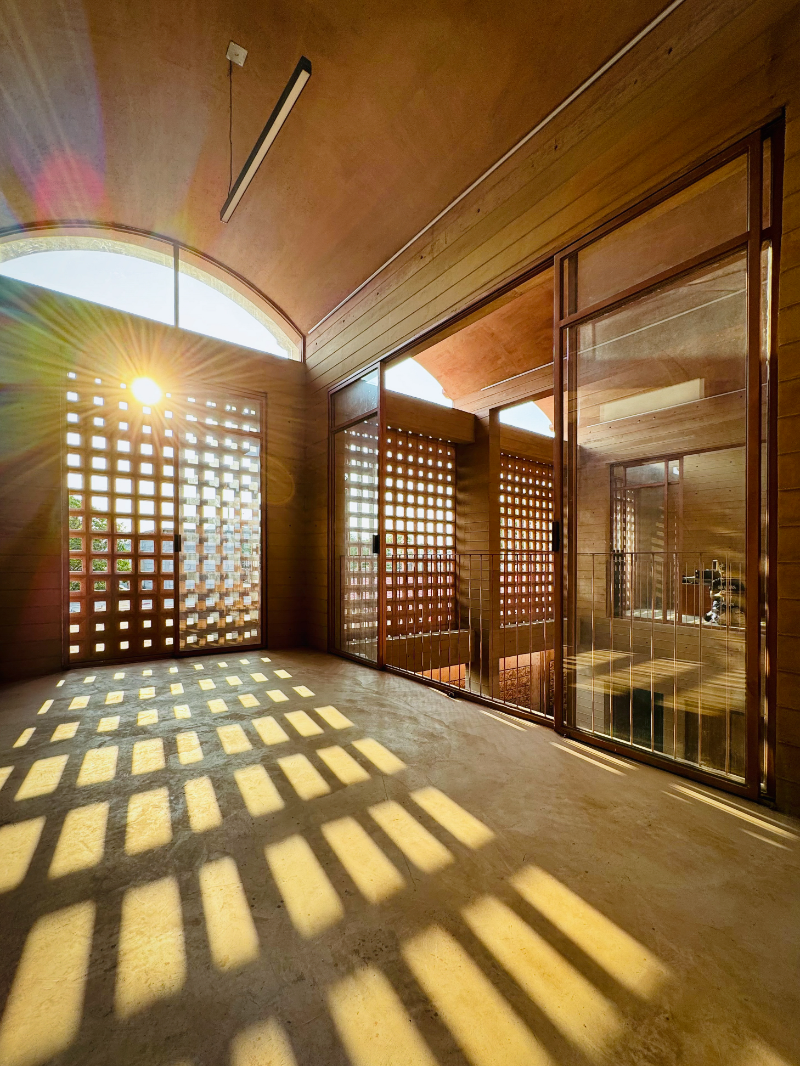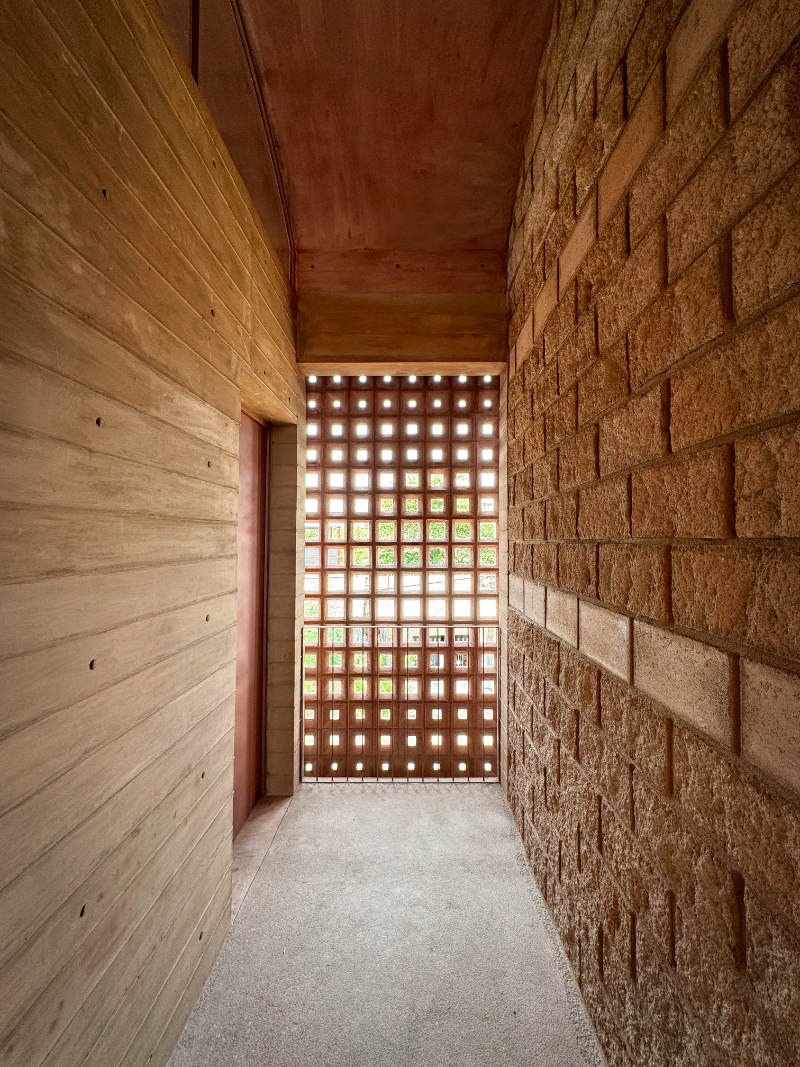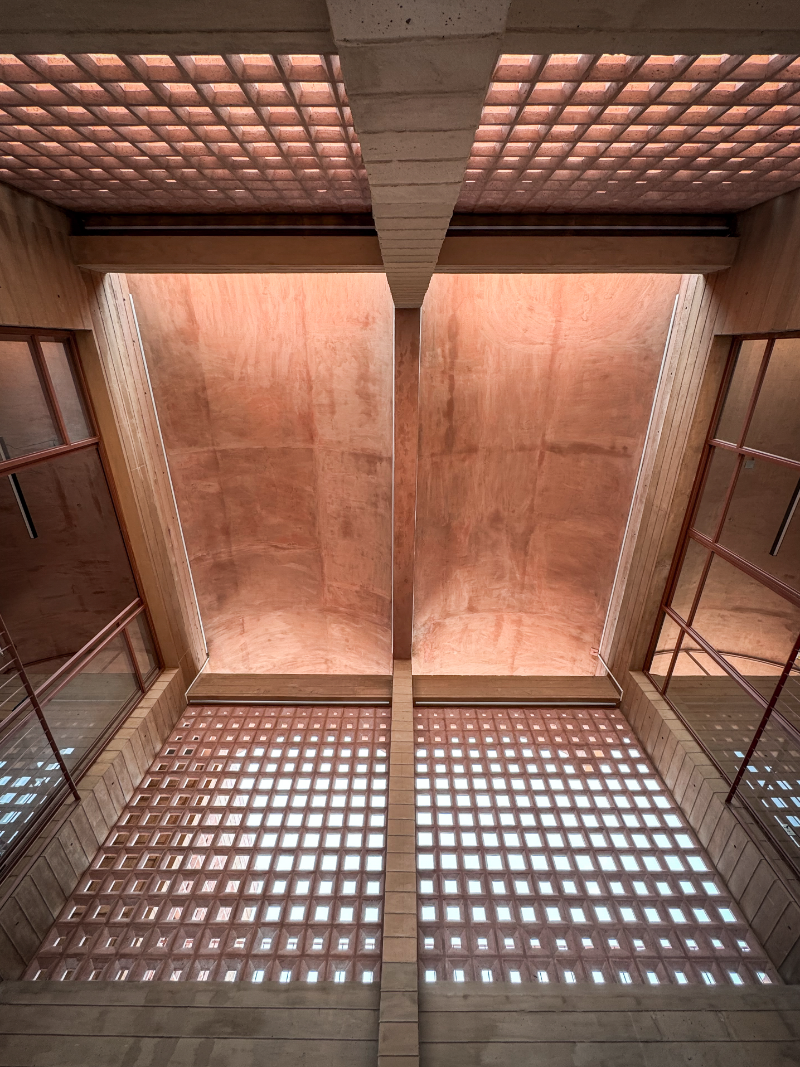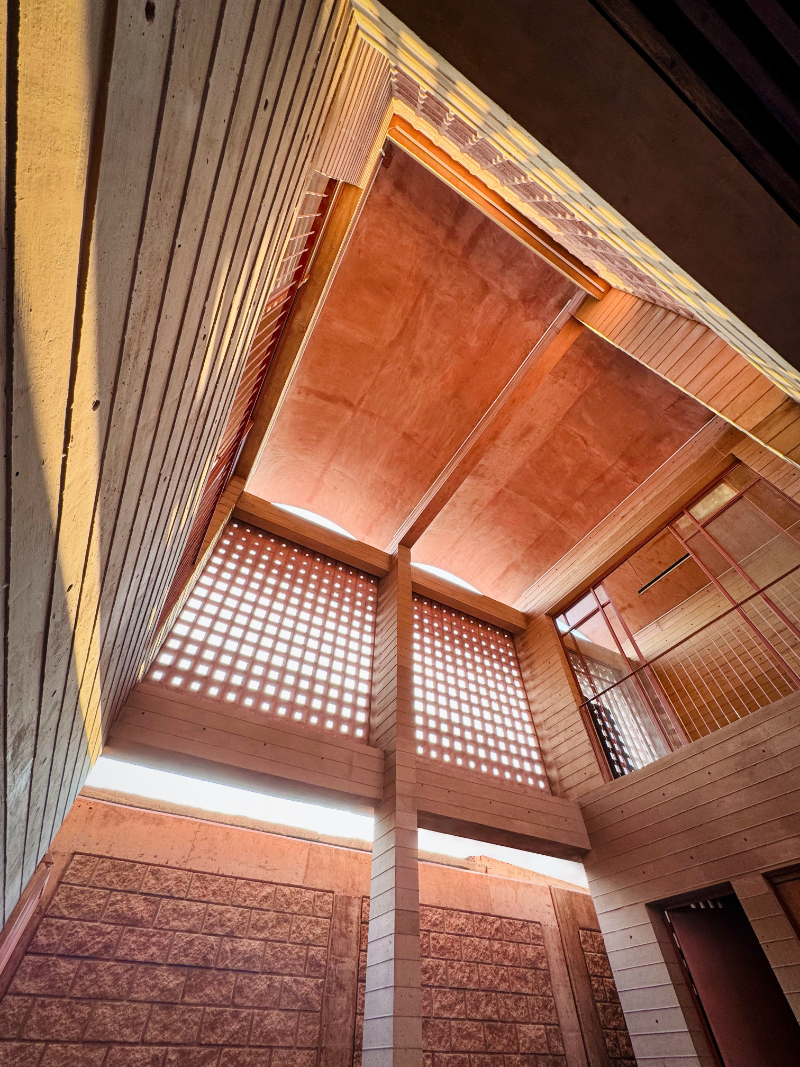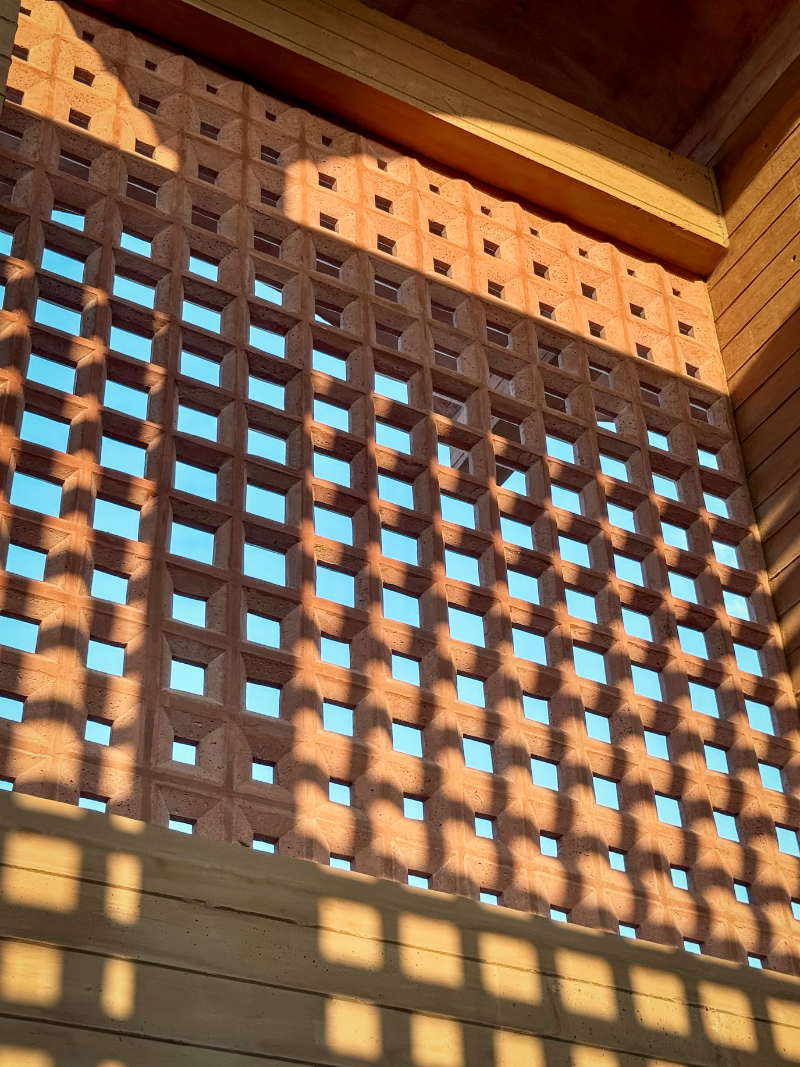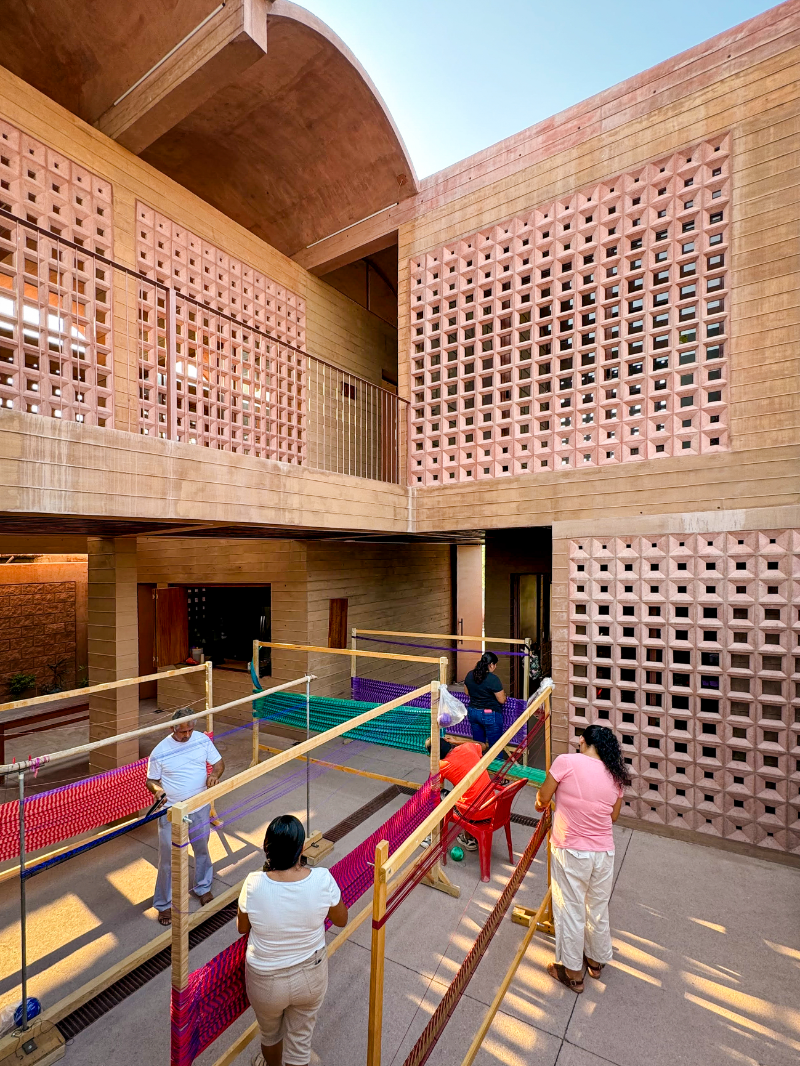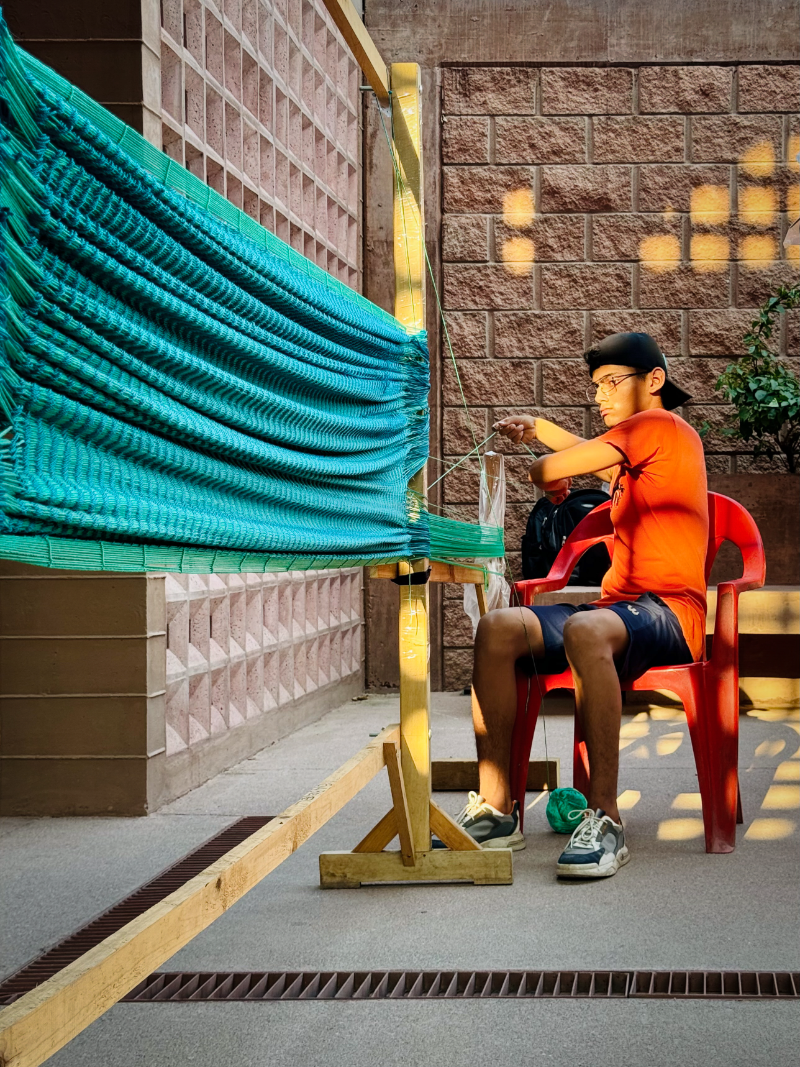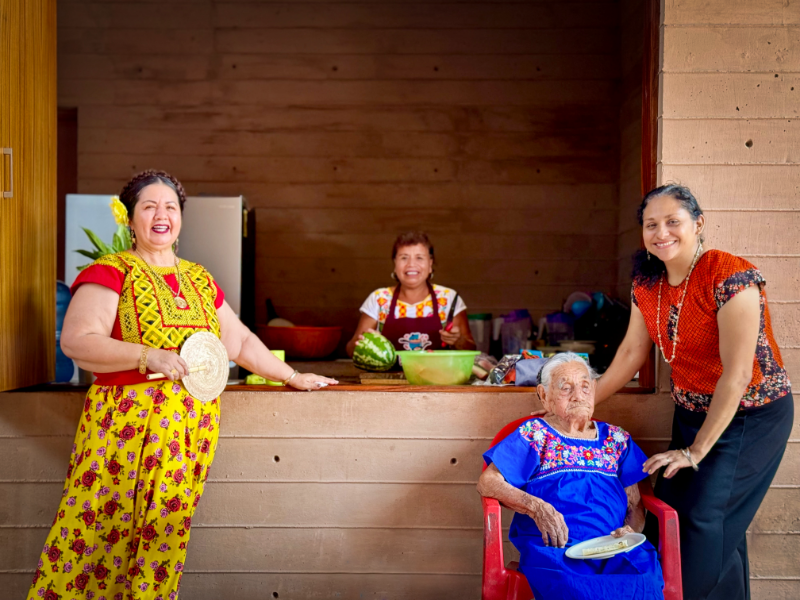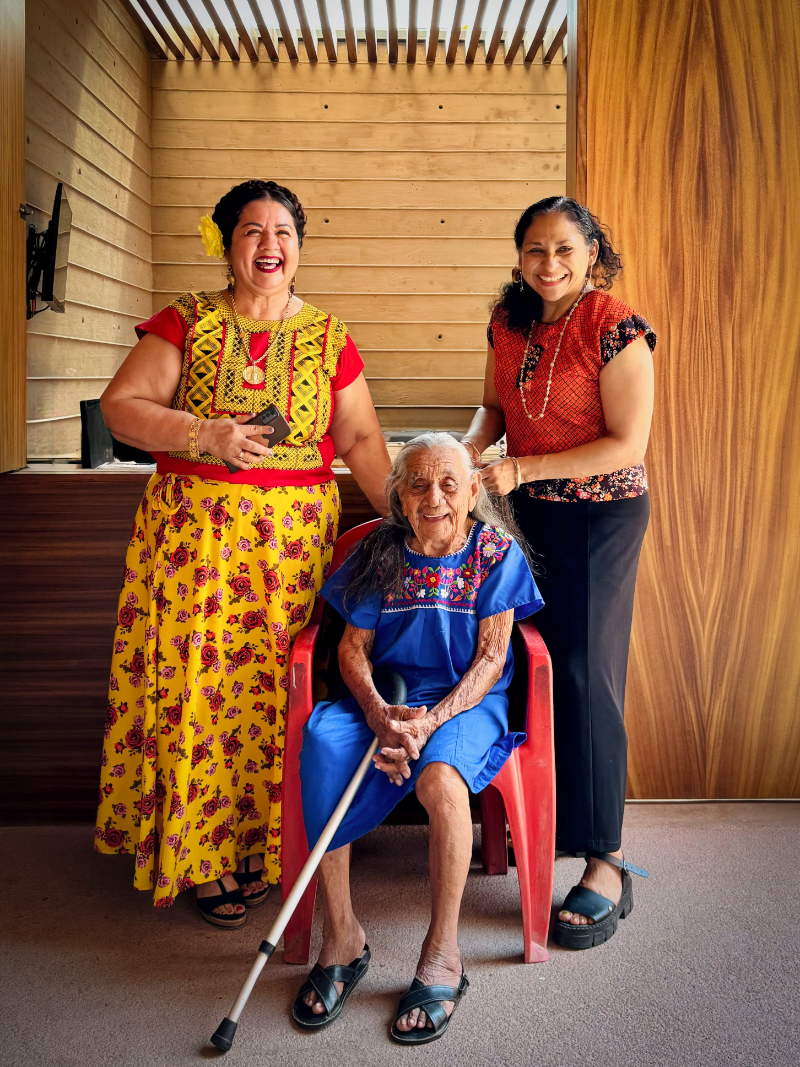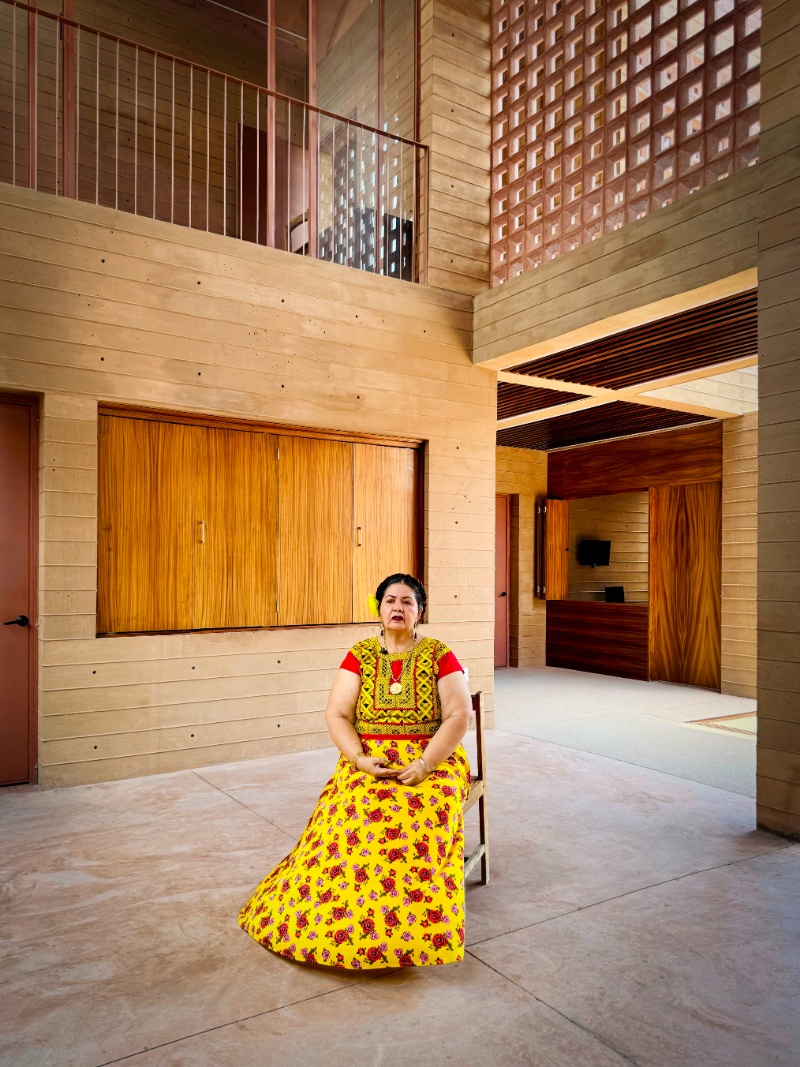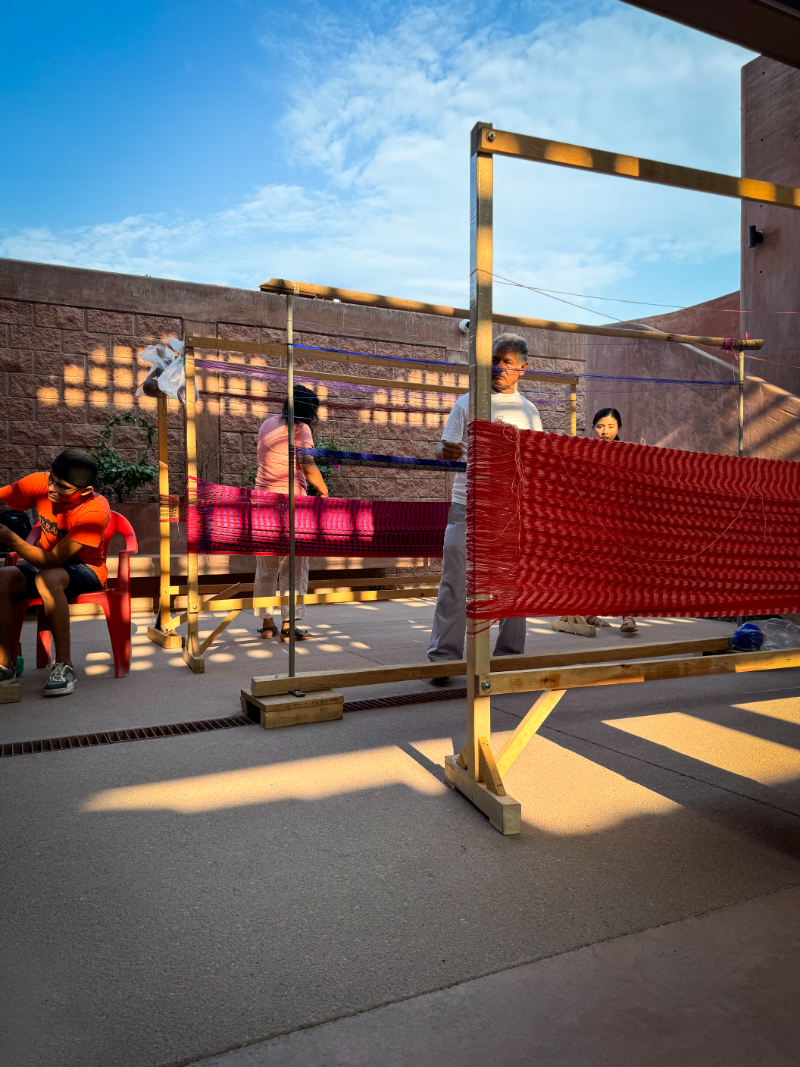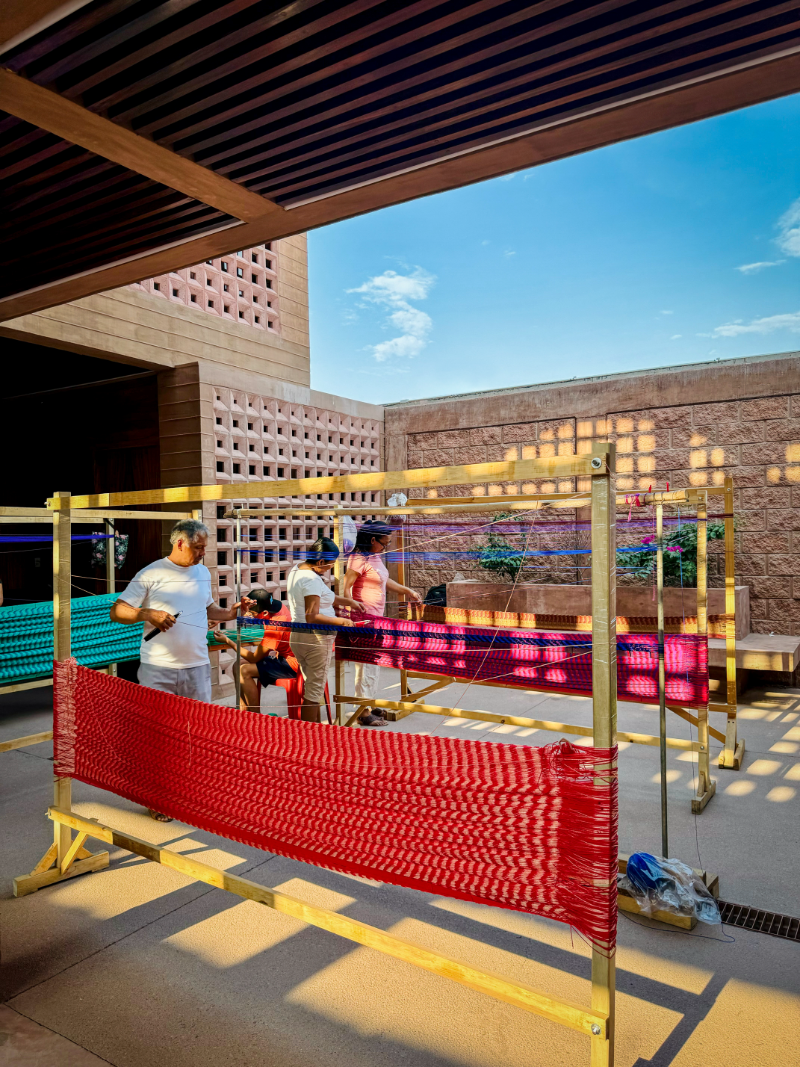Centro DIF is a community center in the heart of San Pedro Comitancillo, a small town in Oaxaca in the Istmo de Tehuantepec region. This intervention replaces a deteriorated single-level facility where care was provided to the community in overcrowded and unsanitary conditions.
Adapting the architectural program to a 212 m² plot of land has been a real challenge; In the first instance we have decided to divide the program into two levels to decongest the ground floor using an L-shaped layout. By moving part of the program to the second level we have gained free area that has allowed us to articulate the rest of the program.
Access from the street is defined by a discreet pedestrian door that leads to a narrow hallway and later to a central patio flanked by a staircase. This patio is adjacent to a double-height, semi-open, covered area that functions as a flexible space for events, workshops and meetings, although its main use is as a public dining room. The kitchen is adjacent to this space from where you can access a food warehouse and pantries that are distributed to the population in emergency situations. On the second floor there is a meeting room, two offices and the management office.
Our approach was based on defining 5 transverse bays along the site, each crowned by a concrete vault. The facades are covered with pigmented concrete lattices with variable openings that filter light, reduce thermal gains and give privacy to the offices and consulting rooms. The spaces are filled with natural light that enters from the top of the vaults, minimizing the need for artificial lighting.
The project plays with different textures and shades of concrete, the curvilinear elements such as the body of the staircase and the vaults have a smooth semi-polished finish in a terracotta tone, while the orthogonal volumes are finished with a fluted formwork in an earthy tone. Finally, the perimeter fences were bordered with pigmented concrete block in a rustic and textured finish that acts as a backdrop for the vegetation accents. These stone textures are enriched with carpentry details in parota wood, and with ironwork with a rustic tone for the railings and window frames.
As a whole, the building seeks to be a game of textures and geometric patterns that maximize the play of light and shadows. As the sun moves across the sky, the lattice produces an intricate play of shadows that travel projected across the different surfaces of the building.

